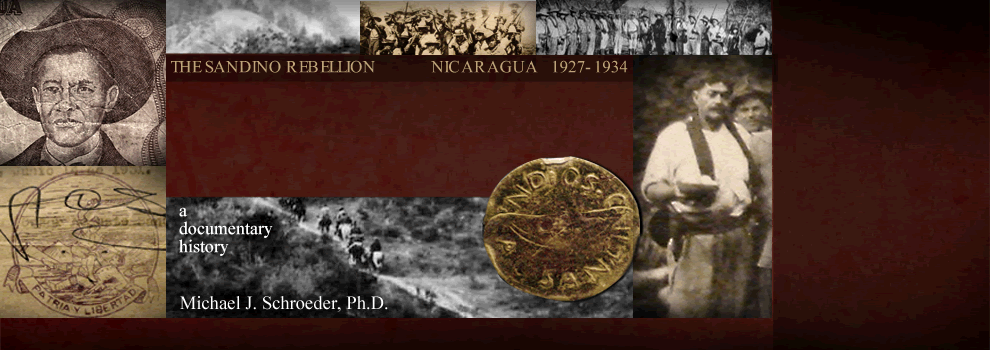
 |
|
M —
D O C S: M I S C E L L
A N E O U S D O C U M
E N T S |
|
thru 1927 |
1928 |
1929 |
1930 |
1931 |
1932 |
1933 + |
|
1
|
2
|
3
|
4
|
5
|
6
|
7
|
8
|
9
|
10
|
11
|
12
|
1
2
3
4
5
6
7
8 9
10 |
1
2
3
4
5
6 |
7
8
9
10
11
12 |
1 2 3 4 5 6 |
7 8 9 10 11 12 |
1 2 3 4 5 6 |
7 8 9 10 11 12 |
1 2 3 4 5 6 |
7 8 9 10 11 12 |
1 2 3 4 5 6 |
7 8 9 10 11 12 |
1 2
3 4 5 6
7 8 9 10 |
|
THIS IS THE THIRD
PAGE
of the M-DOCS (Miscellaneous Documents) pages,
covering the period from
January 1 to May 31, 1927. The
critical introduction to the page is forthcoming.
Complementary
documents for this period are housed in the
Henry Stimson Files,
TOP 100, PAGE 100.
This website project is indebted to Mr. Brandon
Ray, Summa Cum Laude college graduate
from Ashford University in Iowa (with a B.A. in
History and a minor in Political Science) for
his meticulous transcriptions on this and many
other pages.
|
|
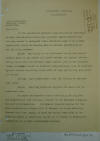
|
January 1, 1927.
The Mengel Company, The Freiberg Mahogany
Company, Nicaragua Mahogany Company, and S. B.
Vrooman Co. Ltd., to J. A. McConnico, American
Consul, Bluefields, p. 1. "Bluefields,
Nicaragua, ¶ Jan. 1st. 1927. ¶ Mr. A.J.
McConnico, ¶ American Consul, ¶ Bluefields, ¶
Dear Sir:- ¶ We the undersigned Americal
[American] Companies having interests at Cape
Gracias, Wawa, Prinsapolca [Prinzapolka] and
Pearl Lagoon believe that the only manner to
safeguard these interests would be to include
these Ports within the Neutral Zone as already
established, for the following reasons: ¶ First:
That owing to our Government having established
Neutral Zones in Rio Grande and Puerto Cabezas
and Admiral Latimer having stated that the
Forestal Taxes shallbe [shall be] paid to the
Constitutional Government headed by President
Diez [Diaz], reprisals will be practiced against
us, such as, cutting loose rafts of logs and
letting same drift out to sea. ¶ Second: That
interference with the loading of steamers will
occur. ¶ Third: That Tug Boats, and supplies for
same will be interfered with. ¶ We state one
concrete case of the taking of supplies and
interference with loading a stemaer [steamer] by
the Liberals occupying the Port of Prinsapolca
[Prinzapolka]. The Steamer Muneric loading for
the Otis Manufacturing Company will be delayed
and heavy demurrage incured [incurred] thru
their supply of Gasoline having been taken by
the Liberals, unless an additional supply can be
gotten to Prinsapllca [Prinzapolka] immediately
at a great unneccessary [unnecessary] expense. .
. . "
|
|
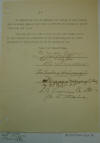
|
January 1, 1927.
The Mengel Company, The Freiberg Mahogany
Company, Nicaragua Mahogany Company, and S. B.
Vrooman Co. Ltd., to J. A. McConnico, American
Consul, Bluefields, p. 2. "We
believe the steamer Agwistar now loading at Cape
Gracias for the Mengel Company will also be
affected for reasons as stated above Nos. 1-2
and 3. ¶ Trusting that you will be able to get
some prompt action on this request for
protection of our interests, from Our State
Department or Naval Forces now on the ground, we
are, ¶ Yours very respectfully, ¶ The Mengel
Company ¶ [unreadable] ¶ Otis Manufacturing Co.
¶ [unreadable] ¶ The Freiberg Mahogany Co. ¶
[unreadable] ¶ Nicaragua Mahogany Company ¶ by
J.F. Neil - V.P. ¶ S.B. Vrooman Co. Ltd. ¶ J.E.
[unreadable] "
|
|
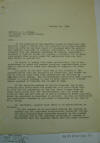
|
January 2, 1927.
J. F. Neill, Vice President, Nicaragua Mahogany
Company, to Admiral J. L. Latimer, Nicaragua, p.
1. "Sir:-
¶ We are informed by the American Consul at
Bluefields that you have issued a ruling that
the forestal tax on logs exported from all ports
on the East Coast of Nicaragua shall be paid to
the American Collector of Customs, Bluefields.
We are further informed that the American
Collector of Customs, Bluefields, proposes to
hold us liable for payment of forestal tax in
every case except when we have asked for
protection from you, but have failed to receive
it. ¶ We desire to comply with these
instructions, but we are constrained to point
out certain practical considerations which must
of necessity be taken into account in applying
the above ruling. ¶ All ports on the East Coast
are in the control of the revolutionists with
the exception of Bluefields, Rio Grande and
Puerto Cabezas which have been neutralized and
occupied by American naval forces. The
revolutionary authorities have hitherto refused
to permit loading of logs at ports under their
control unless payment of forestal tax is made
to them. ¶ If the exporter refuses to pay the
forestal tax to the revolutionary authorities
and warns the said authorities that he will ask
the protection of the U.S. Naval Forces there is
every probability that the revolutionists will
cut loose the rafts of logs and let them go to
sea or indulge in other reprisals which the
exporter is powerless to prevent. In such an
eventuality any assistance rendered by you would
of necessity be too late to be of value. ¶ We,
therefore, suggest that there be an
understanding as follows: ¶ “In the absence of
an agreement between the Admiral in Command and
the competent revolutionary authority whereby
the said revolutionary authority consents to the
payment of forestal tax to the American
Collector of Customs at Bluefields that the
exporter shall have the right whenever […] "
|
|

|
January 2, 1927.
J. F. Neill, Vice President, Nicaragua Mahogany
Company, to Admiral J. L. Latimer, Nicaragua, p.
2. "[…]
necessary to pay the forestal tax to the de
facto authorities except at ports where the U.S.
Naval Forces are in position to extend adequate
protection to the exporter and prevent the
application of duress to labor necessary to load
prior to time of exportation. ¶ Very
respectfully, ¶ NICARAGUA MAHOGANY COMPANY, INC.
¶ By J.F. Neil ¶ Vice-President. ¶ Copy to
American Consul, Bluefields. ¶ Copy to American
Collector of Customs, ¶ Bluefields."
|
|
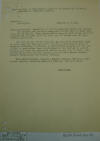
|
January 2, 1927.
J. A. McConnico, American Consul, Bluefields, to
Secretary of State, Washington D.C.
"(True reading
of Code Message sent to the Secretary of State,
Washington, January 2, 1927.) ¶ SecState, ¶
Washington. ¶ January 2, 3 P.M. ¶ Begin
quotation: Secretary of State, Attention Olds
and Stabler. ¶ The undersigned American
companies having logs at Cape Gracias, Pearl
Lagoon, Wawa, Prinzapolka request that these
ports be neutralized in order that the logs may
be loaded and our properties protected. ¶ In
view of the recent decision Latimer that
forestal taxes on logs exported from all ports
of east coast must be paid to American Collector
of Customs at Bluefields we need and are
entitled to protection from revolutionists who
refuse to permit loading and threaten reprisals
unless we pay tax to them. Revolutionists have
already seized gasoline [from] Otis
Manufacturing Company Prinzapolka preventing
loading. ¶ Otis Manufacturing Company, Mengel
Company, Nicaragua Mahogany Company, Freiberg
Mahogany Company. End quotation. ¶ McConnico."
|
|
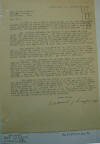
|
January 10, 1927.
Osmond Thompson, Bluefields, to Hon. A. J.
McConnico, Bluefields, Nic. "Bluefields,
Nic. January 10th 1927 ¶ Hon. A.J. McConnico, ¶
American Consul, ¶ Bluefields, Nic. ¶ Dear Sir:
¶ I find it necessary to place before you the
following facts because neither my Consul nor
myself have obtained any satisfaction after
appealing to the Commander of the Landing forces
of the U.S.S. Galveston, and Admiral Latimer. I
am a British subject. ¶ The Schooner Atlantic
was wrecked on this coast 38 miles north east of
Bluefields Bluff. She was insured. The
Underwriters Agent, Mr. Thos. W. Waters, sold
the wreck to me and gave me a valid title. I
proceeded to rebuild the vessel, renamed her the
“Seven Stars”, registered her under the
Nicaraguan flag, and operated her in the trade
on this ciast [coast?] between here and Puerto
Cabezas for ten months, when she was seized by
Louis Coe, one of the previous owners. ¶ The
Schooner was in litigation at the time she was
wrecked, and the Court had placed the vessel in
the hands of one Carlos Pasos as Depository, and
he was working her for the benefit of the
owners. The Insurance of $6,000.00, the
Underwriters Agent paid to the said Carlos
Pasos, the Court appointee. My title is
absolute. ¶ The political troubles here brought
about an agreement before Admiral Latimer,
between General Arguello of the Conservative
Government, and General Moncada of the
Constitutional Government. Article #7 of this
agreement states clearly neither side shall use
boats belonging to foreigners or foreign
companies. Coe’s object in seizing the “Seven
Stars” was to permit the Conservatives to use
her. I protested to Commander Richardson of the
U.S.S. Galveston and to the Admiral. So did the
British Consul in my behalf, and all the
satisfaction we received was the Admiral would
look into the matter. ¶ The Admiral permits the
vessel to remain in the hands of the
Conservatives Government in violation of the
agreement to which he was a party. The vessel
has been taken up into the river between here
and Rama and is used as a Man-of[-]War. She is
in danger of being attacked by the Liberals and
to be sunk. I protest energetically against
action of the Admiral in not inisiting
[insisting] that the agreement signed by
himself- General Arguello and General Moncada,
protecting foreign floating property be
observed. ¶ Yours truly, ¶ Osmond Thompson"
|
|
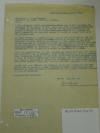
|
January 11, 1927.
Lui Hong, for Ho Ming and Co., Bluefields, to
Hon. A. J. McConnico, US Consul, Bluefields, p.
1. "Bluefields,
11th January 1927.- ¶ Honourable A. J.
McConnico, ¶ Consul of the United States of
America, ¶ City. ¶ I Hing Ching, of lawful age,
married, merchant and of this domicile and
principal of the firmof [firm of] Wo Hing and Co
of Cukra Hill, respectfully beg to submit the
following claim against the Nicaraguan
Government for damages sustained by the armed
forces operating in the District of Pearl Lagoon
and its vicinity during the months of August
last up to the present date. ¶ My store situated
at Cukra has been sacked and looted besides the
different merchandise taking therefrom without
my consent and in return I received a receipt
from the troops and at times none. Herewith find
eleven vouchers or receipts for goods numbered
from 1 toll, the eleventh is the last voucher
obtained from General Luis Zelaya, one of the
expeditionary chiefs who commanded some of the
Government forces at Pearl Lagoon. This last
receipt fully proves my assertion of looting. ¶
From the appended list you will clearly see that
I have lost ONE THOUSAND and TWENTY DOLLARS AND
FORTYFIVE CENTS AMERICAN GOLD in cash and
merchandise besides my clothing to the value of
TWO HUNDRED DOLLARS, which make a total of
TWELVE HUNDRED AND TWENTY DOLLARS and FORTYFIVE
CENTS GOLD for which I respectfully claim said
amount, from the Nicaraguan Government, which
amount I hope that you will see that I obtain
for my losses. ¶ Hoping that you will see the
justness of my case which has not only put me
out of business in the District of Cukra
temporarily but has hindered me from gaining my
livelihood and the accrued profits I obtained
from my business. ¶ Respectfully submitted. ¶
Per Wo Hing and Co. ¶ Lui Hong"
|
|
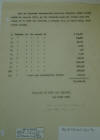
|
January 11, 1927.
Lui Hong, for Ho Ming and Co., Bluefields, to
Hon. A. J. McConnico, US Consul, Bluefields, p.
2. "List
of Vouchers representing articles forcibly taken
during month of August, 1926, by the Chamorro
military troops from the store of WO HING AND
COMPANY, a Chinese firm at Cukra Hill, near
Pearl Lagoon. ¶ 1. Voucher for the amount of
$18.00 ¶ 2. “ “ “ “ “ [$]19.95 ¶ 3. “ “ “ “ “
[$]12.00 ¶ 4. “ “ “ “ “ [$]3.00 ¶ 5. “ “ “ “ “
[$].60 ¶ 6. “ “ “ “ “ [$]7.00 ¶ 7. “ “ “ “ “
[$]40.00 ¶ 8. “ “ “ “ “ [$]129.00 ¶ 9. “ “ “ “ “
[$]195.00 ¶ 10. “ “ “ “ “ [$]100.00 ¶ 11. “ “
cash and merchandise looted [$]495.00 ¶
$1,020.45 ¶ (Signed) WO HING AND COMPANY, ¶ Per
HING CONG"
|
|
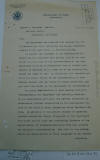
|
1.
January 15, 1927. Robert E. Olds,
for Secretary of State Frank B. Kellogg, to
Andrew J. McConnico, Esquire, American Consul,
Bluefields, p. 1. "ADDRESS
OFFICIAL COMMUNICATIONS TO ¶ THE SECRETARY OF
STATE ¶ WASHINGTON, D. C. ¶ DEPARTMENT OF STATE
¶ WASHINGTON ¶ January 15, 1927. ¶ Andrew J.
McConnico, Esquire, ¶ American Consul, ¶
Bluefields, Nicaragua. ¶ Sir: ¶ The Department
has received your despatch No. 197 of December
24, 1926, respecting the alleged unneutral
conduct of Mr. Leon Frank, an American citizen.
¶ It appears that pursuant to the Department’s
instructions you conferred with Admiral Latimer
who submitted to you a copy of his
correspondence to the Navy Department in which
he recommended that no further protection be
extended to Mr. Frank or to any property the
latter may claim to own. In concluding your
despatch you state you cannot concur in the
recommendation of Rear Admiral Latimer that Mr.
Frank be denied protection, and you refer the
matter to the Department for determination. ¶ In
giving consideration to Rear Admiral Latimer’s
recommendation the Department has carefully
examined, as you undoubtedly have also, the
several statements of subordinate officers
transmitted in his confidential report to the
Chief of Naval Operations dated September 28,
1926. In addition to the general charges of
unneutral conduct against Mr. Frank, it appears
to the Department that there are at least two
outstanding features of the report which, if
substantiated, would more than justify the
Admiral’s recommendation. The first is the
charge, (which you characterize as “very
damaging” to Mr. Frank) ¶ regarding […]"
|
|
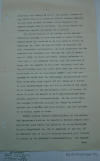
|
2.
January 15, 1927. Robert E. Olds,
for Secretary of State Frank B. Kellogg, to
Andrew J. McConnico, Esquire, American Consul,
Bluefields, p. 1. "[…]
regarding the receipt by one of the Liberal
leaders of the letter (which he showed to
Admiral Latimer) alleged to have been written by
Frank, whose signature the Admiral states that
he verified. Mr. Frank denies the charge and
regards the matter as a mistake. ¶ The second
feature is the matter of the serious admissions
alleged to have been made by Frank to Lieutenant
McGee and referred to in the latter’s report of
September 14, 1926, (a copy of which is enclosed
for your convenient information). In this
connection the Department has reviewed your
despatch No. 196 of December 17, 1926, in which
you state, having reference to that part of the
despatch dealing with the donation of money for
the benefit of the rebel soldiers, that you “do
not believe that Mr. Frank ever made the
assertion attributed to him by Lieutenant
McGee,” and that you “prefer to think that the
Lieutenant misunderstood him.” Your apparently
high regard for Mr. Frank as a result of your
acquaintance with him for a period of two years
is of interest to the Department, which, of
course, desires to give due weight to your
non-concurrence with Admiral Latimer’s
recommendation. On the other hand, the charges
preferred against Mr. Frank by Admiral Latimer
are specific and very serious, and are alleged
to be widely known as true. ¶ Before giving
further consideration to the matter, the
Department desires to receive a further report
from you giving such facts (in addition to those
contained in your despatches No. 196 of December
17 and No. 197 of December 24) as in your
opinion support your refusal to concur in the
Admiral’s recommendation. The Department […]"
|
|
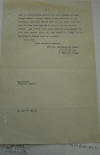
|
3.
January 15, 1927. Robert E. Olds,
for Secretary of State Frank B. Kellogg, to
Andrew J. McConnico, Esquire, American Consul,
Bluefields, p. 1. "[…]
ment is particularly anxious for your comment on
Lieutenant McGee’s report, omitting any
reference to his statement regarding relief work
for the rebel soldiers, said to have been
engaged in by you and the British Consul. Any
events which have occurred subsequently to your
last report, which you feel would be of help to
the Department, should also be included. ¶ I am,
Sir, ¶ Your obedient servant, ¶ For the
Secretary of State: ¶ Robert E. Olds ¶
Enclosure: ¶ Copy of report. ¶ 317.115 B 621/15"
|
|
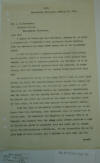
|
1.
January 17, 1927.
Letter from Leon Frank, Bluefields,
to A. J. McConnico, US Consul, Bluefields, p. 1.
"COPY.
¶ Bluefields, Nicaragua, January 17, 1927. ¶ Mr.
A. J. McConnico, ¶ American Consul, ¶
Bluefields, Nicaragua. ¶ Dear Sir: ¶ I desire to
advise you that yesterday, January 16, at about
9 o’clock A.M., I observed a Diaz government
launch removing from her anchorage my sloop
UNION taking her to the Government wharf. ¶ I
wish to register a vigorous protest against this
action as no process, court or otherwise, has
been taken against said vessel, and as she is
American property, and our Navy, so it is said,
is here to protect American lives and property,
it seems strange that the Commander of the
landing forces permitted this act. ¶ To review
the status of the sloop UNION I wish to state
that on May 21, last, the Constitutional forces
seized the vessel, in escaping from Bluefields,
and through the good office of your Consulate
and the British Consul, and expending a
considerable sum for cables, she was finally
located at Bocas del Toro, and at my request you
wired and requested the American Consular Agent
at that point, to have her held subject to her
owner’s orders. ¶ With the idea of preventing
trouble I requested you to address then then
Governor, Jose Solorzano Diaz, to permit her to
return here. He consulted the Minister of
Foreign Affairs at Managua, who replied that the
sloop could return provided a bond of $2,000 was
given to guarantee that she would not be seized
again for revolutionary activities. It was
impossible for me to give bond of that nature,
but I offered to give bond for the ¶ amount […]"
|
|
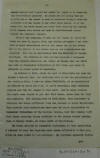
|
2.
January 17, 1927.
Letter from Leon Frank, Bluefields, to A. J.
McConnico, US Consul, Bluefields, p. 2.
"
[…] amount desired that I would not permit the
vessel to be taken for any revolutionary
purposes. My reason for not giving bond
requested was as the vessel is used in Coastwise
trade, I could not guarantee what may happen to
any other coast points, as it was known that the
Power Barges and other boats owned by the
Cuyamel Fruit Company were seized and used by
Constitutional forces without the company’s
consent. ¶ While I was preparing to send for the
vessel the civil war broke out anew in August,
1926, and shortly afterward I was notified by
local authorities that as the vessel was at Rio
Grande Bar in the service of the Sacasa forces,
her Matriculation was canceled. This was an
instruction from the Minister of Foreign
Relations. You informed me that you had received
a radiogram from the American Minister, Mr.
South, of Panama that the UNION was held by
Panamanian Authorities at that time, and would
be released on proper proof of ownership. ¶ On
October 2, 1926, after the port of Bluefields
had been declared a Neutral Zone, and believing
that we had the protection of our American Navy,
I sent my sloop FERNANDINA, at an expenditure of
$600.00 to Bocas del Toro, to prove ownership,
make seaworthy repairs and tow the vessel to
this port. Due to heavy weather the boats were
forced to put into Port Limon, Costa Rica for
fuel and supplies. Not finding fuel at Port
Limon, they proceeded to Colorado Bar where
sufficient fuel was secured to reach Bluefields.
Upon arrival here accusations were made by local
authorities to Commander Richardson of the
Landing forces, that the vessels left Port Limon
carrying thirty soldiers of the Sacasa forces
landing them at Monkey Point, 20 miles south of
Bluefields. ¶ On being advised by Commander
Richardson of this accusation I offered to have
the Captains make sworn affidavits before you,
which he said would be satisfactory. My captains
appeared before ¶ you […]
"
|
|
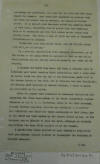
|
3.
January 17, 1927.
Letter from Leon Frank, Bluefields, to A. J.
McConnico, US Consul, Bluefields, p. 3.
"
[…] you making the affidavits, that none but the
crew left Port Limon aboard the vessels. When
these were presented he received them but would
not accept them as evidence, and requested
further proofs. At my request your Consulate
cabled the American Consul at Port Limon,
requesting that he secure from Port Officials
data as to passengers and crew that sailed on
the vessel when leaving there. The reply, a copy
of which was sent to Commander Richardson, was
as follows: ¶ “FERNANDINA LEFT HERE TOWING
UNION, CREW OF SIX MEN ABOARD EACH BOAT, NO
PASSENGERS.” ¶ In a previous conversation with
Commander Richardson, as to the status of the
sloop UNION he informed me that as she had no
matriculation she was totally American property
and could not be touched. ¶ I brought the UNION
from Bocas del Toro, a friendly port to a
Neutral port under American Naval Authorities,
when I could just as easily taken her into any
one of the Nicaraguan ports held by the Sacasa
forces at the time, but by bringing her into
Bluefields, the Neutral port declared by Admiral
Latimer, I tried to prove my neutrality in the
matter. ¶ After the proofs were presented to
Commander Richardson disapproving the false
accusations of the local authorities Captain
Townsend of the U. S. S. GALVESTON, wrote to the
then Governor, General Gustavo Arguello, that he
was convinced that neither the FERNANDINA nor
UNION had taken passengers at Port Limon, but as
the UNION has been seized by the Sacasa forces
in May, he the Governor was at Liberty to take
the boat, although no truthful accusations has
been filed against me or the vessel. ¶ I
immediately filed protest at your Consulate
requesting that you address Admiral Latimer to
reconsider the decision of Captain Townsend. ¶ I
was […]
"
|
|
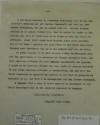
|
4.
January 17, 1927.
Letter from Leon Frank, Bluefields, to A. J.
McConnico, US Consul, Bluefields, p. 4.
"
[...] I was later informed by Commander
Richardson that it was the Admiral’s decision
and not Captain Townsend’s and that he,
Commander Richardson, was not in accord with it.
Admiral Latimer replied to my appeal through
you, that he washed his hands of the matter, and
that it would have to be taken up with the State
Department. About eight weeks have elapsed since
above occured [occurred], and at the time I
appealed for protection to the State Department
through your Consulate, and up to the present
have had no reply. ¶ It seems strange to me that
we have a Navy in Nicaragua only for the
protection of the Mahogany and Banana interests
here, and that American citizens who have
smaller investments are ignored. I claim as an
American citizen the same right of justice
accorded to any other American citizens or
corporation, and ask that the Naval Commander be
immediately ordered to see that my property is
returned to me, and that I be indemnified for
any losses sustained. ¶ I request that a copy of
above protest be forwarded to the State
Department and to the American Minister at
Managua. ¶ Respectfully submitted. ¶ (Signed)
LEON FRANK."
|
|
|
|
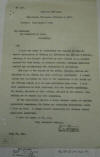
|
February 5, 1927.
Leon' Frank's Case. Telegram from
A. J. McConnico, US Consul, Bluefields.
" No.
207. ¶ AMERICAN CONSULATE. ¶ Bluefields,
Nicaragua, February 5, 1927. ¶ SUBJECT: Leon
Frank’s Case. ¶ THE HONORABLE ¶ THE SECRETARY OF
STATE, ¶ WASHINGTON. ¶ SIR: ¶ I have the honor
to acknowledge the receipt of Department’s
Instruction of January 1[second digit
unreadable, most likely “5” or “6”], 1927 (Film
No. 317.115 B 621/15), relating to the charges
submitted by Rear Admiral J. L. Latimer against
Mr. Leon Frank, an American citizen, alleging
unneutral conduct and recommending the
withdrawal of protection. ¶ The copy of the
report of Lt. McGee, alleging serious admissions
by Mr. Frank, has been carefully considered. I
cannot accept his statements in view of the
assertions of Mr. Frank and the British Consul
that no such admissions were made. I have full
confidence in both gentlemen; but the reports
concerning Lt. McGee, received at this office,
are not to his credit, compelling me to regard
him with suspicion. ¶ If the Department desires
I shall forward copies of written complaints
concerning Lt. McGee and Commander Richardson,
which I have on file. I cannot recall accurately
the various verbal complaints submitted. ¶ I
have the honor to be, Sir, ¶ Your obedient
servant, ¶ A. J. McConnico, ¶ American Consul. ¶
File No. 350."
|
|
|
|
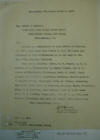
|
March 9, 1927.
A. J. McConnico, US Consul, Bluefields, to Mr.
Albert F. Hopkins, Secretary, Full Gospel Tract
Depot, Philadelphia, PA.
"Bluefields, Nicaragua, March 9, 1927. ¶
Mr. Albert F. Hopkins, ¶ Secretary, Full Gospel
Tract Depot, ¶ 8035 Oxford Avenue, Fox Chase, ¶
Philadelphia, Pa. ¶ Sir: ¶ Receipt is
acknowledged of your letter of February 18,
1297, requesting this office to give the names
and addresses of such Missionaries as we may
know in the Bluefields Consular District. ¶ They
are as follows: Revds. W. H. Hooper, D. H. B.
Miller, G. A. Heidenreich, C. Conrad Shimer, and
H. H. Stortz of Bluefields, Nicaragua; Revd. F.
Wolff, Pearl Lagoon, Nicaragua; K. Bregenzer,
Karawala, Nicaragua; Revd. J. Fisher, Twappi,
Nicaragua; Revd. N. Wilson, Quamwatla,
Nicaragua; Right Revd. G. Grossman, Bragmans
Bluff, Nicaragua; Revd. K. G. Hamilton, Cabo
Gracias, Care of W. H. Seat; Revd. F. E.
Schramm, Sangsangta, Care of W. H. Seat, Cabo
Gracias, Nicaragua; and Revd. J. Palmer, Yulu,
Nicaragua. ¶ Very respectfully yours, ¶ A. J.
McConnico, ¶ American Consul. ¶ File No. 360. ¶
Enclosure: ¶ General Information Sheet."
|
|
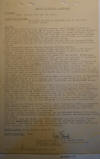
|
March 26, 1927.
"Record of Events," Gen. Logan Feland
(fragment). "RECORD
OF EVENTS continued. ¶ WEATHER: ¶ Fair, terrain
very dry and dusty. ¶ CONDITION OF ROADS: ¶ Road
from MANAGUA to MATAGALPA can be traversed by
motor trucks. ¶ EVENTS: ¶ 25th March, 1927 the
Force Service Company, Naval Forces On Shore In
Western Nicaragua for duty at the Supply Base at
CORINTO, was established, in accordance with
Force Special Order Number 17, dated 25 March,
1927. ¶ 0820 Two (2) planes # 6369 and 6380 took
off and returned 1140. Captains Mulcahy and
Campbell pilots with Pvt Woolsey and Lt Lemly as
observers. Cross country reconnaissance to
GRANADA and return. ¶ 1020 Commander Special
Service Squadron arrived LEON and departed 1040,
for MANAGUA. He was met at the station by the
Commanding Officer Landing Forces. ¶ 1345
Commander Special Service Squadron arrived
MANAGUA. ¶ 1350 Commanding Officer, Landing
Forces informed Commander LEON Detachment of
rumored probable revolutionists’ attacks on LEON
and LA PAZ CENTRO and gave instructions for
repelling same. ¶ 1400-1420 Landing Forces
notified (by phone) LA PAZ CENTRO, CHICHIGALPA
and CHINANDEGA of plan to reenforce [reinforce]
LEON patrol and outposts if necessary. ¶ 1825-
Truck train from MATAGALPA to MANAGUA arrived
MANAGUA. ¶ 1830- Upon receipt of further orders
to Commanding Officer Landing Forces from
General Saenz, regarding rumors attacking LEON,
Commanding Officer Landing Forces informed Force
Headquarters by phone and gave orders to
Commander LEON Detachment for establishment of
extra patrols in city, for having men ready for
instant service and for holding in readiness
special engine and cars to send to LA PAZ CENTRO
with or for reenforcements [reinforcements]
during the night, if and as necessary. ¶ 1845
Commanding Officer Landing Forces gave
telephonic orders to Commander CHICHIGALPA
patrol to hold special engine and cars ready to
bring reenforcements [reinforcements] (80 men)
from CHICHIGALPA, POSOLTEGA and QUEZALGUQUE
[QUEZALGUAQUE] during the night if necessary. ¶
1915- Commanding Officer Landing Forces received
word from Force Headquarters (by phone) that a
special train was being held in readiness in
MANAGUA to transport 200 Marines to LEON if
reenforcements [reinforcements] were requested.
¶ 1930- Commander LA PAZ CENTRO Patrol reported
that only two privates of the daily patrol sent
out (1 corporal and 6 privates) had returned to
camp and that a searching party had failed to
find the missing corporal and four privates. The
two privates stated that the corporal had
ordered them to return to camp and they believed
the missing five contemplated desertion. ¶ 1940
Commanding Officer Landing Forces gave
telephonic orders to Commander CHINANDEGA
Detachment to hold special train just arrived at
CHINANDEGA until further orders, to be used to
transport reenforcements [reinforcements] (100
men) to LEON during the night, if necessary. ¶
2015 Half hourly schedule (telephone) was
established between Force Headquarters and
Headquarters Landing Forces and schedule was
maintained during the night. ¶ During the night
of 25-26, two rifle companies and one (1) M.G.
Platoon stood by [the words “under arms” are
typed here, but crossed out] in MANAGUA,
available for immediate movement, if necessary,
upon orders from the Commanding General. Two
trains also stood by to transport the above
troops if necessary. ¶ ORDERS ISSUED: Force
Special Order # 17. ¶ ORDERS RECEIVED: None. ¶
LOGAN FELAND, ¶ Brigadier General, U. S. Marine
Corps, ¶ Commanding General, Naval Forces On
Shore ¶ In Western Nicaragua. ¶ Copy to M. G.
C., Cmdr Spec Ser Sqdn, file."
|
|
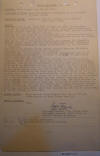
|
March 29, 1927.
"Record of Events," Gen. Logan Feland
(fragment).
"RECORD OF EVENTS. continued. ¶ WEATHER:
Fair, terrain very dry and dusty. ¶ CONDITION OF
ROADS: Road from MANAGUA to MATAGALPA can be
traversed by motor trucks. ¶ HEALTH OF TROOPS:
Excellent. Sick in hospital (1 in Quantico). ¶
Sick present (29). ¶ EVENTS: ¶ 0825 Three (3)
planes, #6369, 6361 and 6393 with Capt. Mulcahy,
Capt. Campbell and MarGun Wodarczyk pilots, and
Lt. McCullough, Pvt. Hoskinson, and Pfc. Johnson
observers took off and returned 0950. Tactical
problem- bombing attack on the MANAGUA Airdrome.
¶ 0835 One (1) plane took off and returned 0950.
Lt. Lamson-Scribner, pilot and Capt. Pierce
observer. Ship # 6381. Reconnaissance mission
and utilizing a high frequency aircraft radio
set. ¶ 0900 Letter sent to Commanding Officer
Landing Forces: THE COMMANDING OFFICER LANDING
FORCES WILL HAVE THE BRANCH RAILROAD FROM
CHICHIGALPA TO SAN ANTONIO PATROLLED TO INSURE
ITS PROTECTION. /s/ M.B. HUMPHREY, by direction.
¶ 0930 Commanding Officer Landing Forces
notified Commander CHINANDEGA Detachment of the
above patrol (by telephone). ¶ 1320-1700 Capt.
Knighton USMC, on “gasolina” investigated rumor
of 50 revolutionists near railroad in vicinity
of LA CEIBA and upon return stated that rumor
was groundless. ¶ 1325 A three (3) ship
formation, Capt. Mulcahy, Lt. Cushman and Capt.
Campbell pilots, and Gy Sgt. Geer, Capt. Pierce
and Lt. Lamson-Scribner observers, took off and
reconnoitered district in LEON area as
personally directed by the Commanding General.
On the return trip the airplane piloted by Capt.
Campbell left the formation at LEON to make some
aerial photographs. After photographing the city
of LEON, this plane returned due east from LEON
to MANAGUA and was fired upon by about 200
rifles and one or two machine guns in the hands
of revolutionists, located in the woods. Twelve
hits were registered on the plane, two in the
wings and ten in the fuselage all of which
entered the forward and rear cockpit, carrying
away part of the rudder bar and the left tail
skid control wire. The pilot returned the fire
with 146 rounds from the fixed gun. Casualties
of revolutionists unknown. Neither the pilot nor
the observer was injured. Subsequent
examinations of the planes revealed that plane
#6361, pilot Lt. Cushman was hit four times and
plane #6369, pilot Capt. Mulcahy was hit once by
shots fired by revolutionists, on March 28th. ¶
ORDERS ISSUED: Force General Order Numbers five
(5) and six (6). ¶ Force Operations Order Number
nine (9). ¶ ORDERS RECEIVED: ¶ None. ¶ LOGAN
FELAND, ¶ Brigadier General, U.S. Marine Corps,
¶ Commanding General Naval Forces On ¶ Shore In
Western Nicaragua. ¶ To: The Major General
Commandant. ¶ Copy to: The Commander Special
Service Squadron. ¶ File."
|
|
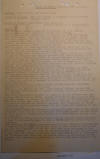
|
March 30, 1927.
"Record of Events," Gen. Logan Feland
(fragment).
"RECORD OF EVENTS. March 30, 1927
continued. ¶ WEATHER: Fair, terrain very dry and
dusty. ¶ CONDITION OF ROADS: Road from MANAGUA
to MATAGALPA can be traversed by motor trucks. ¶
HEALTH OF TROOPS: Excellent. Sick present 49. ¶
Sick in hospital 3. (1 in Quantico). ¶ EVENTS: ¶
0545 One truck departed MATAGALPA for MANAGUA
with Capt. Beattie, Chaplain Murdock, two
stragglers and one sick enlisted. ¶ 0645 Fifth
Regiment truck convoy (12 trucks) left DARIO for
MANAGUA. ¶ 0840 Three planes, Capt. Mulcahy, Lt.
Cushman and Lt. Lemly, pilots with Cpl.
Peterson, Cpl. Dunn and Pvt. Muller as observers
took off in planes # 6369, 6381 and 6361 and
returned 0920. This formation conducted a
practice bombing attack on the MANAGUA Airdrome,
experimenting with methods of live bombing on
ground troops. ¶ 0920 One plane, Lt.
Lamson-Scribner pilot and Pvt. Weber took off in
plane # 6393 and returned 1030. This flight was
made to photograph the various military
activities located in MANAGUA. ¶ 0955 Two
planes, Capt. Mulcahy and Lt. Lemly, pilots with
Gy Sgt. Munsch and Mar.Gun Wodarczyk took off
and returned 1245. Reconnaissance patrol
directed by The Commanding General to
reconnoiter along railroad and around the
immediate vicinity of towns between MANAGUA and
CHINANDEGA. ¶ 1200 “Gasolina” left LEON for
MANAGUA, for use of Force Medical Officer. ¶
1500 One truck arrived MANAGUA from MATAGALPA
with Capt. Beattie, Chaplain Murdock, two
stragglers and one sick enlisted. ¶ 1545 Fifth
Reg. truck train (12 trucks) arrived MANAGUA
from DARIO. ¶ 1700 Temporary outpost (1 officer
and 16 men) at LA CEIBA relieved by permanent
outpost (1 officer 18 men) from LA PAZ CENTRO
Patrol. ¶ 1705 The Commanding General directed
that two officers be detailed from the
CHINANDEGA Detachment to meet Mr. Alejandro
Ortega (representative to pay Conservative
troops) and go with him to witness the payment
of the soldiers; each soldier to receive two
dollars and fifty cents ($2.50) gold or the
equivalent. ¶ 1720 Commanding Officer Landing
Forces notified Commander CHINANDEGA Detachment
of the above by telephone. ¶ 1900 Capt. R.G.
Heiner (MC), USN., Force Medical Officer,
arrived LEON on “Gasolina” from MANAGUA, to
inspect available facilities for proposed base
hospital. ¶ 1905 Force Headquarters received the
names of the two officers from Commanding
Officer Landing Forces, (Ensign Greenwald and
Pay Clk White USN), who will witness the payment
of Government troops in CHINANDEGA Department. ¶
2030 Capt. Heiner USN, inspected “Instituto
Nacional” and its Annex, reporting both suitable
for hospital purposes, with preference for
latter. Preliminary negotiations were begun with
Gen. Saenz for occupation of the latter
building. ¶ 2150 Commander CHINANDEGA Detachment
reported 30 shots heard in the eastern outskirts
of the city and that Commander CHICHIGALPA
Patrol had been ordered to be ready to transfer
re-enforcements to CHINANDEGA by special train
if necessary. ¶ 2155 Commanding Officer Landing
Forces directed Commander LEON Detachment to
have 75 replacements ready to send to
CHICHAGALPA [CHICHIGALPA] by special train if
necessary. ¶ 2240 Commander CHINANDEGA
Detachment reported that subsequent
investigation of incident noted above, showed
that shots had been fired by five mounted men
(who had attempted to enter the town) upon being
challenged by four native policemen, and that
when the latter returned the fire the five
mounted men fled. The special patrol-sent from
CHINANDEGA Patrol to investigate the firing-was
also fired upon by unknown persons in the
vicinity of the Barracks, who disappeared
immediately as soon as fire was returned by the
patrol."
|
|
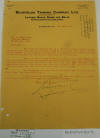
|
March 30, 1927. Letter
from Leon Frank, Bluefields, to US Consul A. J.
McConnico, Bluefields.
"TIGER BRAND SHOES. ¶ CABLE ADDRESS
“TANNING” BENTLEY CODE. ¶ BLUEFIELDS TANNING
COMPANY, LTD. ¶ MANUFACTURERS OF ¶ LEATHER,
BOOTS, SHOES AND BELTS ¶ HIDES AND SKINS OF ALL
KINDS BOUGHT. ¶ BLUEFIELDS, NIC., Mar 30th 1927
¶ Mr. A.J. McConnico, ¶ American Consul, ¶
Bluefields, Nic. ¶ Dear Sir:- ¶ For your
information and as a matter of record, I beg to
advise you that this morning an armed squad of
sailors of the landing forces of USS Denver,
under command of Commander S.A. LaBounty, and
without any previous notice, searched the
tannery belonging to our company. ¶ When I
learnt of the occurrence I went to American
Headquarters and was informed by Junior
Lieutenant [unreadable, possibly “Grasselese”]
that they were searching for arms and that none
was found, was also told that they had been a
denouncement made to the effect that arms was
hidden at the tannery and that the Nicaraguan
who made the denouncementwas [denouncement was]
under arrest. ¶ The Nicaraguan who made the
denouncement has no standing and is without any
responsibility. ¶ I give you all thisinformation
[this information] to show you that it is their
intention to molest me in any and every way
possible. ¶ Yours very truly ¶ Leon Frank"
|
|

|
March 30, 1927.
Radiogram from Otis Manufacturing Co. and S. B.
Vrooman Co., Bluefields, to US Consul A. J.
McConnico, Bluefields.
"Tropical Radio Telegraph Company ¶
RADIOGRAMA ¶ VICTOR M. CUTTER Presidente ¶
GEORGE S. DAVIS Vice-Presidente y Adm. Gen. ¶
BLUEFIELDS, NICARAGUA ¶ March 30, 1927. ¶ [first
letter(s) cut off by fold in paper]LCO
AMMINISTER [ADMINISTER?] ¶ MANAGUA ¶ DOCTOR
SANDOVAL PROPOSES THROUGH OUR CONTRACTORS NOT
MOLEST MAHOGANY OPERATIONS ESCONDIDO DISTRICT
PROVIDED DIAZ FORCES MAKE SAME AGREEMENT STOP
CAN YOU OBTAIN DIAZ CONSENT TO THIS STOP CAN YOU
HAVE DIAZ INSTRUCT GOVERNOR ARANA APPOINT
REPRESENTATIVE TO CONFER WITH DOCTOR SANDOVAL
AND REPRESENTATIVE MAHOGANY COMPANIES IN RAMA TO
SIGN SUCH AGREEMENT WITNESSED BY NAVAL OFFICER
STOP DIAZ AND LIBERAL FORCES HAVE BOTH PLUNDERED
MAHOGANY CAMPS THIS SECTION STOP VERY ESSENTIAL
SECURE THIS GUARANTEE FROM BOTH FACTIONS OR OUR
LOSSES WILL BE ENORMOUS STOP ANTICIPATING EARLY
REPLY AND YOUR OPINION ¶ OTIS MANUFACTURING
COMPANY ¶ S B VROOMAN COMPANY ¶ [first letter(s)
cut off by fold in paper]STE RADIOGRAMA SE
CURSARA A TARIFA ENTERA AL NO INDICARSE LO
CONTRARIO"
|
|
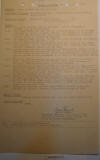
|
March 31, 1927.
"Record of Events," Gen. Logan Feland, Managua
(fragment).
"RECORD OF
EVENTS. March 31, 1927 cont’d. ¶ WEATHER: Fair;
terrain very dry and dusty. ¶ CONDITION OF
ROADS: Road from MANAGUA to MATAGALPA can be
traversed by motor trucks. ¶ HEALTH OF TROOPS:
Excellent. Sick present……….. 43 ¶ Sick in
hospital…… 2 ¶ EVENTS: ¶ 0300 – Pvt. Lewis
Gingras, 45th Co 5th Regt., died in hospital at
MANAGUA, due to appendicitis. ¶ 0845 – Two
planes #6361 and 6393 with Lt. Lamson-Scribner
and Mar.Gunner Wodarczyk as pilots and Pvts.
Williams and Anderson as observers, took off and
returned 0930. This formation conducted a
practice bombing attack on NICARAGUAN Airdrome.
¶ 0940 – The General Court Martial, of which Lt.
Cmdr. William N. Richardson, Jr., U.S. Navy, is
President, met. ¶ 1055 – General Court Martial
adjourned to await the action of the convening
authority, having tried the cases of F.J[.]
McCarthy, Pfc. USMC., and C.E. Davenport, Seaman
2nd cl. USN. ¶ 1100 – General Saenz reported to
Commanding Officer Landing Forces, that
arrangements had been effected for the
occupation as a Base Hospital (by the coming
Hospital Unit) of the house belonging to Judge
Arana, and now rented by the government as an
annex to the Instituto Nacional. ¶ 1310 –
Commander LEON Detachment reports that Pvts.
Caudill and Whitley, USMC., stragglers from LA
PAZ CENTRO Patrol since afternoon of 25 March,
were returned under guard from MANAGUA. ¶ 1355 –
Commader [Commander] Special Service Squadron
(accompanied by his aide), arrived LEON on
regular train from MANAGUA and departed for
CORINTO at 1425, being met at the station by
Commanding Officer Landing Forces, General Saenz
and Dr. Ayon. Captain R.G. Heiner, (MC) USN.,
departed LEON for CORINTO on the same train. ¶
1600 – Commander CHINANDEGA Detachment reports
that Mr. Cutilla (Spanish citizen) was arrested
at SAN ANTONIO by order of Government, and sent
to CHINANDEGA under guard, where he arrived and
was jailed at 1600. He was released,
subsequently, at 1700, by telegraphic order from
President Diaz. ¶ 1600 – Government Paymaster
arrived CHINANDEGA on regular train from MANAGUA
and finished payment of Government troops at
2000. ¶ ORDERS ISSUED: ¶ General Orders number
nine, ten and eleven (9, 10, & 11). ¶ ORDERS
RECEIVED: ¶ NONE. ¶ LOGAN FELAND, ¶ Brigadier
General, U.S. Marine Corps, ¶ Commanding
General, Naval Forces On ¶ Shore In Western
Nicaragua. ¶ To: The Major General Commandant. ¶
Copy to: The Commander Special Service
Squadron."
|
|
|
|

|
April 8, 1927. Letter
from US Consul A. J. McConnico, Bluefields, to
US Minister, Managua, p. 1.
"Bluefields, Nicaragua, April 8, 1927. ¶
THE HONORABLE ¶ THE AMERICAN MINISTER, ¶
MANAGUA, NICARAGUA. ¶ SIR: ¶ I have the honor to
report that several protests have been filed at
this office by American mahogany companies
against the destruction of their camps by both
Conservative and Liberal forces. ¶ On the 22nd
instant, the Otis Manufacturing Company received
a communication from its contractor, Don Jose
Tomas Ocampo, who was in charge of a camp on the
Rama River near Muelle de los Bueyes, stating
that the Liberal troops had entered his camp,
recruited his men and absolutely paralized
[paralyzed] his works. ¶ He also stated that the
operations of the camp on the River Bulun, a
tributary of the Mico near the town of Santo
Tomas and Acoyapa in Chontales, had been
completely paralized [paralyzed] by the Liberal
forces. And the Company had unconfirmed reports
that the camp of Don Ernesto Largaespada, its
largest contractor, had been burned, the cattle
driven away, the supplies sacked, and Senor
Largaespada himself made a prisoner. ¶ The S. B.
Vrooman […]"
|
|
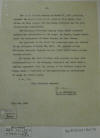
|
April 8, 1927. Letter
from US Consul A. J. McConnico, Bluefields, to
US Minister, Managua, p. 2.
"The S. B. Vrooman Company on March 22,
1927 protested against the destruction of its
camps at Paso Lajas, Rama River, by Diaz troops,
the men being recruited and the provisions being
confiscated. ¶ The Nicaragua Mahogany Company
today filed a protest against the destruction of
its camps on Cusuca, Siquia River, under the
management of Tomas Tejada, by Diaz troops. ¶
The protests of the first two companies were the
subject of my radiogram of March 22, 1927. The
protest of the Nicaragua Mahogany Company was
not filed until today as previously stated. ¶ On
Sunday the Jefe Politico will proceed to Rama
with representatives of the mahogany companies
and enter into a written agreement with the
leader of the Liberal force to bring about a
cessation of the molestation or destruction of
camps by either party. ¶ I am, Sir, ¶ Your
obedient servant, ¶ A. J. McConnico, ¶ American
Consul. ¶ File No. 350."
|
|

|
April 22, 1927.
Radiogram from Benjamin C. Warnick, President,
Bonanza Mines Co., Bluefields, to Admiral
Latimer, Managua.
"Tropical Radio Telegraph Company ¶
RADIOGRAMA ¶ VICTOR M. CUTTER Presidente ¶
GEORGE S. DAVIS Vice-Presidente y Adm. Gen. ¶
Bluefields, April 22, 1927. ¶ COPY. ¶ ADMIRAL
LATIMER, ¶ MANAGUA. ¶ REFERENCE GUITIERREZ
BONANZA MINES COMPANY MATTER SUBMITTED YOU BY
CAPTAIN WAINWRIGHT GUITIERREZ CONTINUES
MOLESTING PLEASE HAVE HIM REMOVED IMMEDIATELY
ANSWER ¶ BENJ. C. WARNICK. ¶ PRESIDENT. ¶ ESTE
RADIOGRAMA SE CURSARA A TARIFA ENTERA AL NO
INDICARSE LO CONTRARIO"
|
|
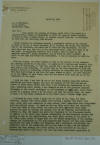
|
1. April
24, 1927. Letter from Dr.
John Louis Marchand, Bluefields, to US Consul,
A. J. McConnico, Bluefields, p. 1.
"JOHN LOUIS
MARCHAND, M. D. ¶ BLUEFIELDS, NICARAGUA, ¶ C. A.
¶ April 24, 1927 ¶ A. J. McConnico, ¶ U. S.
Consul, ¶ Bluefields, Nica. ¶ Dear Sir:- ¶ Late
during the evening of Monday, April 18th I was
asked by a representative Creole of Bluefields
to visit the camp of Creole soldiers at Fruta de
Pan, or Sloop House, to examine several sick men
to determine if they were not suffering from
Malaria. ¶ Before leaving the following morning
I personally called on the officer on duty at
the U. S. Naval Barracks, H. R. Darling, Pay
Clerk, and notified him of my intention, and
asked him if there was any objection. He said
that there was not, but that it was understood
that I make the visit at my own risk. He
suggested, however, that I take a pass to show
to any American sentries I might encounter, and
he wrote me such a permit. My visit to the camp
and return was uneventful. I had no occasion to
show the pass. ¶ After my return, and while
talking to you on the street, if you remember,
Mr. Darling called me to one side. He asked me
if I had had any trouble, and, if I had no
objections, to tell him exactly how I had got to
the camp and by what means I had returned. He
stated that he had been requested to find out,
merely a matter of curiosity, nothing official,
as they know that the Creoles went back and
forth, to and from the camp, almost at will. He
also enquired as to the number of sick there,
what was the matter with them and as to the
conditions at the camp. ¶ I told him that I had
left by one of the boats running regularly
between Bluefields and Pearl Lagoon, and that
the Captain of the boat had put me ashore at
Sloop House Creek; that when I had finished my
examination of the sick, numbering about twenty,
I was brought on one of the gasoline launches
belonging to the Creole contingent to the
outskirts of town, there transferred to a
pitpan, whose I do not know, and that two Creole
boys, the names of whom I do not know, paddled
me to the Point where I landed about dark. ¶ I
[He?] informed me that, altho [although] I might
not be aware of it, they, the naval officers,
thought that these people were getting a mighty
“raw deal,” and that, altho [although] they were
compelled to obey orders, their sympathies were
altogether with the Liberal cuase [cause]. He
asked me what my ideas were about the situation.
I told him about to what extent the Coast had
been exploited since Knox started the game by
turning the country over to the bankers,
represented by Clifford D. Ham; how Hughes had
given the franchise to the Nicaraguan people in
1923-4, as the first step towards eliminating
the Diaz-Chamorro faction and putting a stop to
the exploitation; how their great victory at the
polls in the latter year seemed to augur well
for the future prosperity of the country,
through the elimination of the Diaz-Chamorro-Ham
clique; how this same clique engineered the coup
of 1925; how Crampton, Ham’s assistant,
practically ran Chamorro’s end of the revolution
here on the Coast in May, and how Admiral
Latimer has been running the affair solely in
the interests of the Diaz-Chamorro-Ham outfit
ever since, and that any State Department
regulation of […]"
|
|
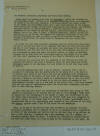
|
2. April
24, 1927. Letter from Dr.
John Louis Marchand, Bluefields, to US Consul,
A. J. McConnico, Bluefields, p. 2.
"JOHN LOUIS
MARCHAND, M. D. ¶ BLUEFIELDS, NICARAGUA, ¶ C. A.
¶ […] the bankers’ pernicious activities had
been merely nominal. ¶ Asked about the landing
force from the Galveston I called his attention
to the gratuitous insult offered me by Commander
Richardson when, as a physician in charge of the
Red Cross Hospital, I protested against his
orders to put in the filthy and overcrowded
local jail a half dozen patients of the hospital
still having open wounds, without even
consulting his own surgeon, and breaking his
given word as an officer thereby; I cited the
incident of his substitution for the report of
his own surgeon, Lieutenant-Commander William E.
Crooks, that of Dr. Jose D. Arana, a Chamorro
physician, reports exactly the opposite as to
the filthy, overcrowded and unhygienic
conditions at the jail, and how Richardson was
just as guilty as any of his officers of open
and shameless drunkenness, the worst bunch of
inebriates that has so far been wished on us. ¶
His reply was that they had known something
about my affair with Richardson, and that I had
had the best of the argument with him, for naval
officers held any one of their number in
contempt who would take advantage of his
position and authority, and the fact that he was
not only armed himself, but that he was
surrounded by armed men under his direct orders,
to insult an American citizen; and he also said
that Richardson ought to have known that he
could not “get over” anything on a surgeon of
Dr. Crook’s reputation and rank. ¶ He repeated
his assertion that the sympathy of the officers
was with the Liberals and told me that when I
wanted to visit the sick among the Creole
contingent again to let him know, for they
wished to do all that they could to help me. ¶ I
told him empathically that I was no Liberal
partizan [partisan]; that I had no reasons for
believing that the politicians of one party were
a bit more to be trusted than those of the
other, but that my synpathies [sympathies] were
altogether with the people of the Coast, as were
those of every other decent white man, and that
I would do all that I could in a professional
way to care for their sick and wounded, as I had
offered to do for the sick and wounded of the
Diaz-Chamorro faction, and as I had done to the
extent that I had been allowed – with not one
cent of remuneration where the latter were
concerned, and with next to none from any
source. ¶ I also told him that there was
absolutely no mistaken idea among us
“old-timers” in Nicaragua as to exactly why our
Navy is here making a “holy show” of itself for
the befuddling of the people at home; and that,
altho [although] we did not blame them
personally for doing the “dirty” work they were
compelled to do under orders, we did blame them
for not doing it like “gentlemen” – and I
complimented him on the exceedingly good conduct
of the officers of his ship, the Denver, against
whom I had so far heard not one complaint. ¶
When, on my way to my offices from noon
breakfast on Saturday the 25th, Lieutenant
Lehrfeld, now in command of the U. S. Landing
Force, accosted me in front of the barracks and
told me that he had just been to my offices to
have a talk with me, I wondered why I was
becoming, all of a sudden, so extremely popular
with the Navy. I invited Mr. Lehrfeld to return
with me and make his visit then, as I had an
hour at his disposal at the time. He […]"
|
|
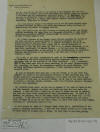
|
3. April
24, 1927. Letter from Dr.
John Louis Marchand, Bluefields, to US Consul,
A. J. McConnico, Bluefields, p. 3.
"JOHN LOUIS
MARCHAND, M. D. ¶ BLUEFIELDS, NICARAGUA, ¶ C. A.
¶ […] did so – and all the way over to the
offices I kept thinking that now it is my turn
to be “framed,” just as had Leon Frank, the
British Consul and yourself, a few months ago,
by, principally, Lieutenant McGee, of the
Galveston, and I ran over in my mind the “sins”
of commission of which I had been guilty and for
which I might have to suffer under Admiral
Latimer’s peculiar kind of neutrality. These
were as follows: ¶ (1) I had been in charge of
the medical end of the Red Cross Hospital which
our naval officers, as well as the other
Diaz-Chamorro active partizans [partisans] and
sympathizers, had dubbed the Liberal Hospital. ¶
(2) I had written some two dozen letters of
enquiry and protest and several articles
containing the truth about the Nicaraguan
situation, to some sixteen newspapers,
periodicals and news syndicates of the States,
and I know that my mail is being tampered with.
¶ (3) I didn’t approve of our drunken naval
officers parading the streets of the town, and
had so expressed myself on numerous occasions;
and I had written letters of protest, first, to
J. Gilmore Fletcher, a friend in the States with
large interests here, asking him to use his
influence in Washington to have our Navy sober
up, then to U. S. Senator Shipstead, in the same
vein, and, finally, to Admiral Latimer – to the
last about the drunken conduct and incompetence,
to say nothing of the untruthfulness, of
Lieutenant Commander Richardson of the Galveston
– and from none of these had I received a reply.
¶ (4) I had, as you know, contributed my quota
to the accusations of drunkenness and utter
unreliability against Lieutenant McGee of the
Galveston, made at the request of the State
Department – and I considered that it was about
time that we heard something, in the usual
“pussy-footing” way, regarding, at least, the
accusations against our naval officers. If I am
doing Lieutenant Lehrfeld an injustice, I shall
apologize should the occasion arise. ¶ My sins
of omission were only one: I had not openly, or
in any other way, espoused the cause of the
Diaz-Chamorro faction, as some Americans did,
even during Chamorro’s unrecognized incumbency
and in spite the fact that we had been warned by
both you, as American Consul, and by some of our
naval officers to observe a strictly neutral
attitude – and I was therefore called a
“Liberal,” whatever that signifies. ¶ Mr.
Lehrfeld first asked me who was in command of
the camp at Fruta de Pan, now that General
Hodgson was dead, and about how many men were
under his command. I told him that a Creole by
the name of Connor was now in command, and that
his force there consisted of about one-hundred
men. He asked me if Buckley, an Anerican
[American], was at the camp, saying that he had
heard that he was in charge. I told him that I
could assure him that Buckley was not there,
altho [although] he might be at one of the other
camps, as there were three of four others,
according to information given to me. ¶ He then
wanted to know if I thought that there was a
probability of the Creoles attacking Bluefields.
I told him that Connor struck me as a man with
too much sense to attempt such a thing. He said
that he had been greatly […]"
|
|
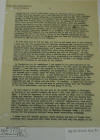
|
4. April
24, 1927. Letter from Dr.
John Louis Marchand, Bluefields, to US Consul,
A. J. McConnico, Bluefields, p. 4.
"JOHN LOUIS
MARCHAND, M. D. ¶ BLUEFIELDS, NICARAGUA, ¶ C. A.
¶ […] annoyed by the “civil” authorities coming
to him with tales of expected attacks from that
quarter; and I told him that as long as the
farce continued of there being any other
authority in Bluefields than his own, which
fooled nobody, he would continue to be annoyed,
that he knew, I knew, and that he now knew that
I knew, that, as long as he was in command of
the landing force here, he was both civil and
military authority – with the possible proviso
that both he and his superior officers would, in
a crisis, probably take orders directly from the
local representative of the bankers, the
American Collector of Customs, just as the
former landing forces had done from the former
Collector, Colonel W. J. Crampton – the
colonelcy being one of the rewards of Chamorro
for the masterly way he had run the latter’s
revolution for him on the Coast, before he was
demoted, nominally by our State Department, in
favor of Diaz, and just as, from all accounts,
Colonel Clifford D. Ham had done in the
Interior. ¶ He then said that he had met Ham,
and that he had heard that he had resigned. I
told him that the resignations of American
diplomats and representatives, or, at the very
least, their removal, were quite according to
long established precedent under such
circumstances; and I asked him if he knew that
Ham was reputed to have personally benefitted,
quite after precedent also, to the extent of
some half-million dollars during his rule of
Nicaragua. He said that he knew that he had
become quite a wealthy man, and asked me who I
thought would take his place. My answer was
that, considering the colonelcy bestowed upon
Crampton, I thought that he would likely be the
man – if things really worked out according to
the plans of the bankers. ¶ He thanked me for
the compliment I had passed on the good behavior
of the officers of the Denver and wanted to know
what I had done about the Richardson affair. I
told him that I had reported in writing to
Admiral Latimer that Commander R. was drunken,
untruthful and incompetent, and that, altho
[although] I was not honored with a reply, about
two weeks later the machinery of the Galveston
got out of order, and she left. I also mentioned
the fact that, after the Americans at Puerta
Cabezas had complained in writing to the Captain
of the Tulsa about the drunkenness of her
officers ashore, her machinery also conveniently
got out of order, and she left. He laughed. I
added that the matter would not rest there, that
we had ways of getting things past the
“blockade” in the State Department, and that we
were going to do so. ¶ He then asked me to give
him the gist of the inside history of Nicaragua
as bearing on the present trouble, which I did,
from 1894 to the present time. I cited how
Secretary of State Olney turned the Coast over
to President Zelaya and American “business” for
exploitation; how, when the thieves fell out
finally, Secretary Knox disfranchised the people
and turned all of Nicaragua over to the American
bankers for a “refined” exploitation, from which
the Coast has been the greater sufferer; how
Hughes all but returned to them their franchise;
how Kellogg is attempting to take it away from
them again, and how it is for a continuation of
this very remunerative exploitation by the
bankers that the American Navy is fighting
Nicaragua today – all other reasons for its
presence here not being worth considering
seriously. ¶ I added that all Central America,
South America and most of Europe were perfectly
well acquainted with these facts, and that only
the people of the […]"
|
|
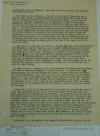
|
5. April
24, 1927. Letter from Dr.
John Louis Marchand, Bluefields, to US Consul,
A. J. McConnico, Bluefields, p. 5.
"JOHN LOUIS
MARCHAND, M. D. ¶ BLUEFIELDS, NICARAGUA, ¶ C. A.
¶ […] United States were in ignorance. His reply
was that our people had certainly been kept in
the dark. ¶ I then asked a few questions. I
wanted to know why, if Bluefields was a neutral
town, General George Hodgson had not been
permitted to come to his home for medical
treatment when he was practically dying. He said
that he had got the Admiral’s permission for the
General to remain for treatment unmolested, but
that, when he went to inform him of this, he
found that he had left for his camp the night
before, that he had evidently been afraid to
stay. I told him that it was the general opinion
of those who knew him best that George Hodgson
did not know what personal fear was, but that
the reason he left was because the so-called
civil authorities and their friends had
threatened to set fire to the part of town in
which he lived in order to smoke him out and get
a shot at him without any risk to themselves;
and that the General had said that, rather than
cause any trouble for Bluefields and to the
American forces, he would prefer to go back to
his camp, even if it meant his death. ¶ I also
wanted to know why, if this was a neutral town,
armed Conservatives were allowed to roam the
streets, and an unarmed Constitutional had to
sneak in and out like a thief. His reply was
that no armed men of either faction were
supposed to be in town – not much of an answer
as I had passed an armed Nicaraguan guard, with
two armed American sailors, sitting in front of
the palace not a half-hour before. I also wanted
to know if he was aware of the fact that the
Conservatives boasted that the American forces
were their “hirelings,” paid to do their
fighting for them. He didn’t answer me, he was
nodding, half asleep, and he apologized, stating
that he had been up very late the night before.
¶ He asked me what I thought of the
“investigation” now being made by Stimson, sent
down bt [by] President Coolidge to learn the
truth. I replied that any investigation that did
not include the Coast, or even start with the
Coast, was no investigation at all; and that it
is the opinion among the old residents here
that, from Stimson’s former close association
with Knox in Taft’s cabinet, he came down with
orders, not to investigate, but to “go through
the motions” so as to keep Diaz in the
presidential chair until the loans are all made
to the satisfaction of the bankers – loans that
are not needed by Nicaragua. ¶ I asked him,
then, if he knew whether it was true that the
new move was to place Diaz officials in all of
the so-called neutral towns now under the civil
authority of Constitutional officials. His reply
was that he did not know whether such was the
case, and he wanted to know what I thought of
such a possible move. I told him that, altho
[although] Admiral Latimer had made more than
one man’s share of blunders here, such a
procedure would cap them all for pure
imbecility, unless his idea was to bring on
murder, riot and assassination, which we really
thought not improbable, judging from past
experiences of his activities. I told him that
this was my idea of what would happen, judging
from the present temper of the much tried
Constitutional troops, already cheated out of
every victory over, first, the Chamorro, and,
then, the Diaz, troops, to say nothing of having
been cheated out of their victory at the polls
in 1924. ¶ I expressed it as my opinion that
Admiral Latimer would find out that he […]"
|
|
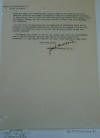
|
6. April
24, 1927. Letter from Dr.
John Louis Marchand, Bluefields, to US Consul,
A. J. McConnico, Bluefields, p. 6.
"JOHN LOUIS
MARCHAND, M. D. ¶ BLUEFIELDS, NICARAGUA, ¶ C. A.
¶ […] could not order the Constitutional leaders
about in the same way that the American
officials had become accustomed to order the
Diaz-Chamorro officials to come and go; that he
could not fool them into any further peace
plans, after the October fiasco, and that they
knew exactly for what they were fighting – the
franchise. ¶ He left with the assurance that the
Americans of Bluefields would not be subjected
to any drunken shows by the officers of his
command – and he left me under the impression
that I had told him nothing of which he was not
already familiar. ¶ I am making this report to
you for the reason that there is a possibility
that I may be “framed” and that this may be the
first step in the procedure. If this proves to
be not the case, there will be no harm done. ¶
Very truly yours, ¶ John Louis Marchand, M. D."
|
|
|
|
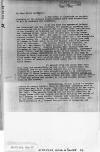
|
May 8, 1927.
Letter from Col. Louis M. Gulick,
Tipitapa, to "My dear Major Bartlett," p. 1.
"CP.
FIFTH REGIMENT, ¶ TIPITAPA, NICARAGUA ¶ 8 May
1927 ¶ Time – 0900 ¶ My dear Major Bartlett:- ¶
A few notes to elucidate on certain features of
the present situationthat [situation that] have
been transmitted to you by messages and
telephone. ¶ I do not know the agreement between
the Government and the Liberals, but generally
speaking the Conservatives are to evacuate the
line they have been holding in the vicinity of
Tuestepe and Boaco and retreat south of the
Tipitapa River, which river we have been holding
since 6:00 a.m. May 6th, 1927. The bulk of the
Conservatives have already crossed south of the
Tipitapa River and a few stragglers are now
coming in. These Conservatives are going into
camp at Panama (a farm) which is on the Managua
road 3 kilometers south of Tipitapa. The Liberal
troops have remained, as near as I can learn, in
their position in the vicinity of Tuestepe and
Boaco. General Moncada went through here the
afternoon of the 6th accompanied by Major
Brewster, Lieutenant Moran, U.S.N., and Mr.
Willie, going to Las Banderas with the mission
of giving instructions to the troops of his army
to disband by being conducted to some place
south of the Tipitapa River where they will be
given $10.00 a piece for each rifle and a letter
of amnesty which would allow them to return to
their homes. ¶ It appears from the above that
this will work out successfully as far as the
Conservatives are concerned, but it is doubtful
whether all of the Liberal leaders will agree to
this proposition and it is contemplated that
some of their leaders, such as Mexican General
Escamilla, will not agree to the terms offered
and will take such followers as they can gather
and proceed to rob and pillage certain sections
of the country. ¶ Tentatively, we are liable to
receive orders to occupy certain towns in
territory extending east to Boaco and west to El
Sauce. The Second Battalion on the right, the
Third Battalion in the center and the First
Battalion on the left. The general plan is for
the Second Battalion to occupy Boaco with one
company and after securing the safety of this
company to move another company into position
farther to the west, probably Camoapa or
Comalapa, or vicinity. The Third Battalion will
secure its position in Matagalpa and […]"
|
|
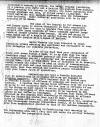
|
May 8, 1927.
Letter from Col. Louis M. Gulick,
Tipitapa, to "My dear Major Bartlett," p. 2.
"[…]
establish a company in Esteli, the Esteli
company consisting of a platoon from Dario and a
Machine Gun platoon from Managua. After securing
the company in Esteli, the Third Battalion will
occupy Jinotega and then, if forces permit it,
Muy-Muy. The First Battalion will operate
northwart [northward?] from the Chinandega-Leon
Railroad. Their center of activities will be in
the vicinity of El Sauce. ¶ The plan of the
General is for companies and larger units to
secure themselves in their respective centers
and then for them to operate from their
respective centers with large elements of their
commands against large bands of former Liberal
Army troops. We are not going to make heros
[heroes] out of a couple of cattle thieves by
chasing them through the jungles with a squad of
Marines. ¶ Major Shearer has been directed to
issue immediate orders advising all Americans
and foreigners to come into Matagalpa for
complete protection. ¶ In view of the fact that
your occupation of Boaco will occur within a
week, it is my wish that you take immediate
steps to acquaint yourself and your officers
with the difficulties you will encounter and the
methods of overcoming them. This is especially
true of distances to be traveled, roads, rivers
and lakes to be used as lines of communication,
conditions of such and your various methods of
transportation. Get maps, have them studied and
question people acquainted with your future
field of operations. ¶ Indications are that a
Guardia Nacional will be established in
Nicaragua while we are engaged in crushing
banditry. The Fifth Regiment will be called upon
to furnish a number of officers to organize and
train the Guardia. I realize that taking these
officers from the regiment is going to hit us
pretty hard, but the loss of officers is one of
the things we must expect in active operation
and I do not expect the efficiency of this
regiment to be impaired by any losses we may
suffer in Nicaragua. I believe that those
officers detailed to the Guardia will eventually
be released by officers from the States who
prefer that kind of duty. At first I doubt if
these officers will get extra compensation but,
eventually, as the Nicaraguan Treasury
replenishes itself, it is intended to give them
compensation similar to that of the Haitien
[Haitian] Gendarmerie. Everything is
funcitioning [functioning] very smoothly in the
regimental area and I feel that all units are
getting valuable training for the prospective
move."
|
|
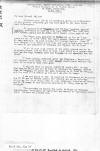
|
May 9, 1928. Letter
from Major H. G Bartlet, El Paso, Nicaragua, to
"My dear Colonel Gulick," p. 1.
"HEADQUARTERS, SECOND BATTALION, FIFTH REGIMENT,
¶ Second Brigade, U. S. Marine Corps, ¶ EL PASO,
NICARAGUA, ¶ 9 May 1927. ¶ My dear Colonel
Gulick: ¶ Received your letter of yesterday
giving me information of the present situation
and was very glad to get some first hand
information. ¶ It appears that Escamilla and
Beltram Sandoval are out raiding, according to
natives that have come in and that they have
seized cattle and so forth about twenty miles
east of us. ¶ The Boaco area assigned my
Battalion as far as I can learn is one in which
after the rainy season starts we will have to
rely entirely on pack animals for
transportation. From El Paso towards Riito there
is no road and pack animals will have to be used
to get supplies to Comalapa and Comoapa via El
Paso. ¶ If it is sure that either of the above
places are to be occupied please let me know so
that I can build up a ration dump here as the
road between here and Granada is now passable
for our truck. ¶ I know nothing definite about
the Tipitapa – Boaco road but believe that after
the rainy season starts pack animals will have
to be used on that road also. ¶ I believe that
my proper method of supply will be via Tipitapa
to Boaco and via El Paso to Comolapa [Comalapa]
or Comoapa. Puerto Diaz to Comalapa is about the
same distance as El Paso to Comalapa and the
road is no better as far as I am able to learn.
¶ I do not think it will be possible or
necessary to transport the 37 MM gun or Stokes
around the country and as my infantry companies
are short would like to make temporary transfer
of Stokes and 37 MM crews to the infantry
companies to bring them up to strength. ¶ The
question of taking the radio to Boaco or
Comalapa depends upon recharging of batteries
and number of batteries available. We have only
three now. [...] "
|
|
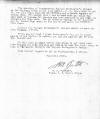
|
May 9, 1928. Letter
from Major H. G Bartlet, El Paso, Nicaragua, to
"My dear Colonel Gulick," p. 2.
" [...] The question of transporting Captain
Livingston’s Company up the Tipitapa River is
one that depends on our being able to get the
two life boats from the SS VICTORIA and a launch
capable of towing them. The launch that I had to
land with and which was sent back to Granada for
repairs has been promised me and willl [will] be
suitable for this work. The SS VICTORIA belongs
to the Railroad and Mr. Carmen Diaz would be the
one to see about the VICTORIA life boats. ¶
Rations for Captain Livingston’s command should
be sent out from Managua, I think. ¶ Would
suggest that Captain Livingston’s Company be
accompanied by one section of machine gun and
one machine gun officer (Lt. Cronmiller). ¶ It
will take at least twenty four hours to get
boats here from Granada for this transfer and
twelve to make two boats trips to head of
Navigation (ferry), for Captain Livingston’s
Company. ¶ With kindest regards to all at
Headquarters, I remain, ¶ Sincerely yours, ¶ H.
G. BARTLETT, ¶ Major, U. S. Marine Corps"
|
|
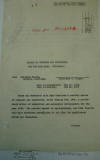
|
1.
May
10, 1927. "Review of Commerce and
Industries for the Year 1926," US Consul
Christian T. Steger, Corinto, p. 1.
"(In
compliance with Paragrap[rest of text cut off] ¶
(597 of the Consular Regulat[rest of text cut
off] ¶ REVIEW OF COMMERCE AND INDUSTRIES ¶ FOR
THE YEAR 1926 – NICARAGUA. ¶ From American
Consul, ¶ Corinto, Nicaragua. ¶ Christian T.
Steger. ¶ Date of preparation: May 10, 1927. ¶
Date of mailing: May 31, 1927 ¶ There was
forwarded with this Consulate’s monthly review
of commerce and industries, dated January 5th,
1927, a preliminary review of industrial and
commercial developments for the year 1926. The
present report is supplementary, and will
furnish only data which was unavailable at the
time the preliminary survey was forwarded. ¶
Foreign […]"
|
|
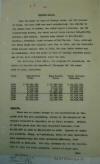
|
2.
May
10, 1927. "Review of Commerce and
Industries for the Year 1926," US Consul
Christian T. Steger, Corinto, p. 2.
"FOREIGN
TRADE. ¶ From the point of view of foreign
trade, and the balance of trade, the year 1926
was most satisfactory. Due chiefly to the bumper
crop of coffee, the chief export commodity, and
the satisfactory prices, the total export value
reached $13,028,726, setting a new record.
Imports were valued at $10,254,512, leaving a
favorable trade balance of $2,774,214. Thus,
although the total trade was slightly less than
in 1920, and the favorable trade balance smaller
than in 1924, the year under review may be
considered, from the point of view of foreign
commerce alone, one of the most satisfactory
since the war. ¶ The following table shows, for
purposes of comparison, the values of imports
and exporters of Nicaragua for the years 1920 to
1926, inclusive: ¶ Year ¶ Importation Value ¶
Exportation Value ¶ Total Foreign Commerce. ¶
1920 ¶ $13,864,389 ¶ $10,787,345 ¶ $24,651,734 ¶
1921 ¶ [$]5,309,902 ¶ [$]8,070,949 ¶
[$]13,380,851 ¶ 1922 ¶ [$]5,123,505 ¶
[$]7,903,446 ¶ [$]13,026,951 ¶ 1923 ¶
[$]7,268,432 ¶ [$]11,028,309 ¶ [$]18,296,741 ¶
1924 ¶ [$]8,806,896 ¶ [$]12,990,026 ¶
[$]21,796,922 ¶ 1925 ¶ [$]10,379,820 ¶
[$]12,359,585 ¶ [$]22,739,405 ¶ 1926 ¶
[$]10,254,512 ¶ [$]13,028,726 ¶ [$]23,283,238 ¶
Imports. ¶ There was no marked change in the
importations as compared with the year
proceeding, either in the amounts of the various
commodities imported, or in their sources.
Entries of cotton goods show the only important
decrease, from $2,669,589 in 1925 to $2,102,998
in 1926. Imports of chemical products, drugs,
and medicines, while of less importance, show
approximately the same percentile decrease, from
$459,980 to $371,595. The only increase was in
the importation of iron and steel products,
values of which rose ¶ from […]"
|
|
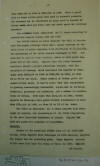
|
3.
May
10, 1927. "Review of Commerce and
Industries for the Year 1926," US Consul
Christian T. Steger, Corinto, p. 3.
"[…]
from $682,245 in 1925 to $843,664 in 1926. While
a great part of these latter goods were used in
peaceful pursuits, the increase may be
attributed in large part to imports of barbed
wire and other iron and steel goods for military
purposes. ¶ The attached table (Enclosure No. 1)
shows according to commodities imports during
1925 and 1926. ¶ The United States as usual
supplied the bulk of imports into Nicaragua;
although there was a slight decrease in the
total value of goods supplied, from $7,272,191
to $7,116,715, the percentage of the total
remains unchanged at 70%. The same may be said
of Great Britain, which in both years supplied
11% of the total. Imports from all other
European countries showed a slight percentile
decline, with the exception of Germany, which
increased its exports to Nicaragua from $607,118
in 1925 to $726,880 in 1926, or from 6% to 7% of
the total. While entries of German goods are
comparatively small, it may be noted that this
competition is growing increasingly successful,
especially in textiles, chemicals, glassware and
porcelain, and a number of manufactures of
metals. From less than $100,000 in 1922, German
exports to Nicaragua have grown without
fluctuation to more than $700,000 in 1926, or
from 1% to 7% of the total. ¶ The table in
Enclosure No. 2 shows imports into Nicaragua by
sources, and percentages of the total
originating in the more important countries of
origin. Figures for 1925 are given for purposes
of comparison. ¶ Exports. ¶ Thanks to the
excellent coffee crop of the 1925-1926 season,
total exports from Nicaragua in 1926 exceeded
slightly the figure for the preceding year.
Sugar exports reached little more than half the
value of those in 1925. Exports ¶ of bananas
[…]"
|
|
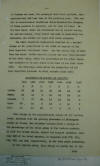
|
4.
May
10, 1927. "Review of Commerce and
Industries for the Year 1926," US Consul
Christian T. Steger, Corinto, p. 4.
"[…]
of bananas and wood, the principal East Coast
products, were approximately 40% less than in
the preceding year. This was due to
revolutionary conditions which hindered the
bringing of these products to seacoast, and the
lack of labor. On the West Coast, where the
Government was in control during the harvest
season, every effort was made to facilitate the
shipments, and coffee and sugar were moved
promptly. ¶ The above described devlopments
[developments] resulted in a decided change in
the proportions to the total of exports of the
more important individual items. For the second
time in more than ten years, coffee exports
account for more than one-half of the total
value, while the proportion of the other
important products is in most cases lower than
it has been since 1920. The following table
shows the proportions of the more important
products to total exports since 1920: ¶
PROPORTION OF EXPORTS BY PRODUCTS: ¶ 1920 ¶ 1921
¶ 1922 ¶ 1923 ¶ 1924 ¶ 1925 ¶ 1926 ¶ % ¶ % ¶ % ¶
% ¶ % ¶ % ¶ % ¶ Coffee ¶ 27 ¶ 29 ¶ 30 ¶ 35 ¶ 56
¶ 45 ¶ 62 ¶ [unreadable, possibly “Woods”] ¶ 18
¶ 11 ¶ 9 ¶ 16 ¶ 10 ¶ 15 ¶ 10 ¶ Bananas ¶ 7 ¶ 17
¶ 25 ¶ 19 ¶ 13 ¶ 14 ¶ 9 ¶ Sugar ¶ 22 ¶ 16 ¶ 8 ¶
12 ¶ 8 ¶ 12 ¶ 7 ¶ Gold ¶ 12 ¶ 12 ¶ 13 ¶ 7 ¶ 6 ¶
5 ¶ 5 ¶ This change in the proportionate values
of the various items, combined with the growing
purchases of Nicaraguan coffee by France, has
likewise brought about a change in the
percentage of the total going to the various
markets. In 1926 the United States, almost the
largest customer, took only 53% of the total
exports, as compared with 77%, 71%, 72%, 57%,
and 65%, respectively, in the five years
preceding. ¶ As was implied above, this change
is partly due to the ¶ fact […]"
|
|
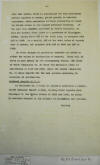
|
5.
May
10, 1927. "Review of Commerce and
Industries for the Year 1926," US Consul
Christian T. Steger, Corinto, p. 5.
"[…]
fact that coffee, which is practically the only
Nicaraguan product exported to France, gained
greatly in relative importance, while production
of those commodities of which the United States
is the largest purchaser declined. At the same
time absolute purchases by France increased, so
that she assumed first place as a purchaser of
Nicaraguan coffee, taking about 37% of the total
crop, as compared with 20% in 1925. As a result,
22% of the total value of exports went to
France, and compared with 16% in 1924 and 14% in
1925. ¶ No other changes of particular interest
are noted in either the volume or destination of
exports. These will be shown in more detail by
two accompanying tables, the first of which
(Enclosure No. 3) shows the principal items of
exportation in 1925 and 1926, while the second
(Enclosure No. 4) shows exports for the same
periods according to countries of destination. ¶
Declared Exports to U. S. ¶ As Enclosure No. 5
there is likewise submitted a consolidated
declared export return, showing total exports
from Nicaragua to the United States in 1925 and
1926, as shown by consular records in the
offices at Bluefields and Corinto. ¶ Customs
[...]"
|
|
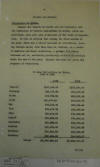
|
6.
May
10, 1927. "Review of Commerce and
Industries for the Year 1926," US Consul
Christian T. Steger, Corinto, p. 6.
"
[...] CUSTOMS COLLECTIONS. ¶ Collections by
Months. ¶ Figures for imports by months are not
available, but the statistics of customs
collections by months, which are given below,
will give some indication of the trend of
importation. It will be noticed that during the
first months of the year, there was a steady
increase in collections, lasting through April;
from this time on, however, as a result of
unstable political conditions, a gradual but
steady decrease set in, continuing practically
without fluctuation until the end of the year.
Figures for 1926 are given for purposes of
comparison. ¶ Customs Collections by Months. ¶
1925 & 1926 ¶ 1925 ¶ 1926 ¶ January ¶
$189,888.99 ¶ $172,598.07 ¶ February ¶
[$]222,617.35 ¶ [$]202,429.49 ¶ March ¶
[$]206,763.70 ¶ [$]230,185.63 ¶ April ¶
[$]181,497.49 ¶ [$]283,922.72 ¶ May ¶
[$]190,128.28 ¶ [$]233,894.56 ¶ June ¶
[$]173,207.7[unreadable, possibly “1”] ¶
[$]225,319.54 ¶ July ¶ [$]184,119.48 ¶
[$]194,212.66 ¶ August ¶ [$]197,298.96 ¶
[$]173,463.11 ¶ September ¶ [$]192,368.81 ¶
[$]152,760.43 ¶ October ¶ [$]190,891.98 ¶
[$]151,191.85 ¶ November ¶ [$]200,619.65 ¶
[$]163,280.29 ¶ December ¶ [$]220,463.33 ¶
[$]142,642.57 ¶ Totals ¶ $2,349,865.73 ¶
$2,325,900.92 ¶ Of the […] "
|
|
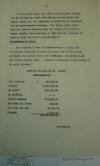
|
7.
May
10, 1927. "Review of Commerce and
Industries for the Year 1926," US Consul
Christian T. Steger, Corinto, p. 7.
"
[...] Of the above total, for 1926, import
duties account for $2,179,406.20, while
$142,936.96 was collected from export taxes, and
the remainder of $3,557.76 is accounted for by
miscellaneous receipts. The figure given above
does not include receipts from the surtax of 12
1/2% on import duties, which amounted to
$266,302.08, bringing the general total for 1926
to $2,592,203.00[.] ¶ Collections by Ports. ¶
The majority of the collections were as usual
made at Corinto, receipts at which port were 68%
of the total. El Bluff, the customs house of
Bluefields, collected 18.6%, and Puerto Cabezas
9.1%. A detailed statement of collections by
ports follows: ¶ Customs Collections by Ports. ¶
1926. ¶ Cabo Gracias ¶ $28,961.18 ¶ Corinto ¶
[$]1,580,493.46 ¶ El Bluff ¶ [$]432,061.69 ¶ El
Castillo ¶ [$]----- ¶ Puerto Cabezas ¶
[$]213,803.07 ¶ San Juan del Norte ¶ [$]146.76 ¶
San Juan del Sur ¶ [$]67,732.96 ¶ Managua ¶
[$]2,701.81 ¶ $2,325,900.92 ¶ Government […] "
|
|
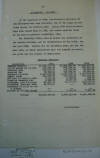
|
8.
May
10, 1927. "Review of Commerce and
Industries for the Year 1926," US Consul
Christian T. Steger, Corinto, p. 8.
"
[...] GOVERNMENT FINANCES. ¶ At the beginning of
1926, the financial situation of the Government
was very favorable, due to the large collections
during the previous year. During 1926 total
revenues were even larger than in 1925, and
almost equalled [equaled] those of the year of
greatest production, 1920. ¶ The following
tables show in detail the production of the
various revenues and the distribution of the
total, for the year 1926. Figures for the
preceding year, and for the year 1920, in which
collections were the largest on record, are
given for the purpose of comparison. ¶ National
Revenues. ¶ Production ¶ 1920 ¶ 1925 ¶ 1926 ¶
Customs revenues ¶ $2,055,989,66 ¶ $2,350,260.84
¶ $2,325,900.92 ¶ 121/2% surtax on imports ¶
[$]231,361.03 ¶ [$]271,726.22 ¶ [$]266,302.08 ¶
Consular Fees ¶ [$]135,670.38 ¶ [$]108,891.39 ¶
[$]98,251.57 ¶ Forestal tax ¶ [$]99,953.11 ¶
[$]124,461.91 ¶ [$]75,060.15 ¶ Internal revenues
¶ [$]1,467,476.49 ¶ [$]1,029,186.31 ¶
[$]1,017,887.75 ¶ School taxes ¶ [$]214,537.58 ¶
[$]242,850.51 ¶ [$]244,813.21 ¶ 50% sale of
public lands ¶ [$]2,614.63 ¶ [$]2,958.85 ¶
[$]693.50 ¶ Property transfer tax ¶ [$]9,998.73
¶ [$]3,947.82 ¶ [$]3,736.88 ¶ Dividends, Pacif.
Railway ¶ [$]81,630.00 ¶ [$]80,000.00 ¶
[$]215,000.00 ¶ Dividends, National Bank
[$]14,700.00 ¶ [$]--- ¶ [$]50,010.00 ¶ Surcharge
of $0.10 on rum & alcohol ¶ [$]--- ¶ [$]--- ¶
[$]--- ¶ Product of Corinto wharf ¶ [$]--- ¶
[$]7,095.76 ¶ [$]7,517.93 ¶ Totals: ¶
$4,444,458.32 ¶ [$]4,358,212.68 ¶
[$]4,442,296.16 ¶ Distribution […] "
|
|
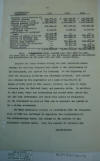
|
9.
May
10, 1927. "Review of Commerce and
Industries for the Year 1926," US Consul
Christian T. Steger, Corinto, p. 9.
"
[...] Distribution. ¶ 1920 ¶ 1925 ¶ 1926 ¶
Expenses administration of customs service ¶
$162,274.29 ¶ $144,715.29 ¶ $129,390.73 ¶
Service bonds of 1909 ¶ [$]345,011.08 ¶
[$]367,252.45 ¶ [$]367,322.76 ¶ Service general
revenues ¶ [$]3,163,788.50 ¶ [$]2,672,282.07 ¶
[$]2,640,405.68 ¶ Service of guaranteed customs
bonds ¶ [$]307,514.21 ¶ [$]387,228.55 ¶
[$]373,551.9[unreadable, possibly “1”] ¶
Expenses of collection of direct tax ¶
[$]3,446.91 ¶ [$]3,526.20 ¶ [$]4,000.63 ¶
Cancellation of emergency issue ¶
[$]63,539.9[unreadable, possibly “5”] ¶ [$]--- ¶
[$]--- ¶ Service of school revenues ¶
[$]214,537.58 ¶ [$]362,850.51 ¶ [$]378,313.21 ¶
Service of forestry tax ¶ [$]99,953.11 ¶
[$]117,537.81 ¶ 28,500.00 ¶ Payment of floating
debt ¶ [$]96,330.00 ¶ [$]--- ¶ [$]--- ¶ Customs
dues remitted ¶ [$]--- ¶ [$]199,342.65 ¶
[$]206,364.48 ¶ Funds in hands of Collector ¶
[$]--- ¶ [$]23,477.16 ¶ [$]--- ¶ Special
services ¶ [$]--- ¶ [$]80,000.00 ¶ [$]265,010.00
¶ Customs refund ¶ [$]--- ¶ [$]--- ¶
[$]49,675.41 ¶ $4,456,395.63 ¶ $4,358,212.68 ¶
$4,441,534.41 ¶ Note: Undeposited funds carried
over from 1919 to 1920, and from 1926 to 1927,
account for the differences between collections
and distribution in the year 1920 and 1926,
respectively. ¶ Despite the large returns during
the year, excessive expenditures for military
purposes have added to the indebtedness of the
Government, and emptied the Treasury. At the
beginning of 1927 the financial situation was
extremely critical. Some relief was attained by
the negotiation of a loan of $1,000,000 in March
of 1927; most of this amount, however, was used
to repay advances from the National Bank, and
pressing debts. In addition to this loan, there
are outstanding war claims whose amount has not
yet been determined, but which will become an
obligation on the Government as soon as they can
be examined and passed on by a claims
commission. ¶ The High Commission created in
conformity with the Financial Plan of 1927 has
continued to supervise the distribution of the
extraordinary funds, and attend to the service
of the Guaranteed Customs Bonds. Thus the
payment of interest and amortization […] "
|
|

|
10.
May
10, 1927. "Review of Commerce and
Industries for the Year 1926," US Consul
Christian T. Steger, Corinto, p. 10.
"[…]
amortization of the public debt has not been
interfered with. One drawing was held in July,
1926, to retire bonds to the value of $110,000,
and at a second drawing in January, 1927,
further retirements in the amount of $125,000
were made, bringing the total retirements from
1926 revenue to $235,000. The total amount
outstanding as of February 1st, 1927, is
$2,632,000. [...] "
|
|

|
11.
May
10, 1927. "Review of Commerce and
Industries for the Year 1926," US Consul
Christian T. Steger, Corinto, p. 11.
"
[... ]BANKING ¶ No developments of interest took
place during the year with respect to banking or
finance. The average circulation of the Cordoba
increased again as compared with the preceding
year, the monthly average rising from 3,467,000
in 1925 to 4,253,000 in 1926. ¶ Interest rates
showed little fluctuation, ranging from 8 to
12%, according to the nature of the security and
of the loan itself. New York exchange remained
unchanged at 99.5 buying and 101 selling,
throughout the year. ¶ Roads […] "
|
|
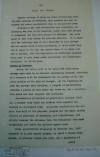
|
12.
May
10, 1927. "Review of Commerce and
Industries for the Year 1926," US Consul
Christian T. Steger, Corinto, p. 12.
"
[...] ROADS AND STREETS. ¶ Despite shortage of
money and other difficulties arising from
internal disturbances, more progress was made in
highway and street construction than in any
previous year. ¶ Although no new road
construction was undertaken, resurfacing was
done on two important roads: that from Managua
to Matagalpa, and that from Managua to Jinotepe.
The total spent on this work during the year was
$120,000. It is hoped that the surfacing done is
of a character to last through the wet season
without being destroyed; in which event work can
be begun in the next dry season where it is
being left off at present, with the expectation
of sufficient progress being made to make these
roads practicable for automobiles throughout the
entire year. ¶ Paving in Managua. ¶ During the
latter half of the year 1925 preliminary surveys
were made by an American engineering concern,
resulting in a contract with the Government for
the paving of all the inner section of the city
of Managua. By the beginning of 1926 the surveys
were finished, a program of construction
covering a period of four years was drawn up,
and a construction plant had been acquired and
installed. ¶ Construction of streets of
penetration macadam (that is, a macadam base
bound and covered with asphalt) was carried on
throughout 1926. Completed construction was not
more than half of the proposed program for the
year: partly because of political disturbances
and interference, but chiefly because the
advances from the Government were made
irregularly and below the amounts agreed upon. ¶
Total construction completed to February 1st,
1927 amounted to 11,629 square meters, or about
2 lineal kilometers, of streets within the city,
and 1 kilometer of ¶ paved […]"
|
|
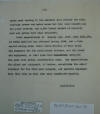
|
13.
May
10, 1927. "Review of Commerce and
Industries for the Year 1926," US Consul
Christian T. Steger, Corinto, p. 13.
"[…]
paved road leading to the cemetery just outside
the city. Sanitary sewers and water mains had
been laid beneath all the paved streets, and
4,900 lineal meters of concrete curb and gutter
have been completed. ¶ Total expenditures to
January 1st, 1927, were $416,180, of which
$200,000 was advanced during 1925, and a like
amount during 1926. About three-fourths of this
total was expended for the preliminary surveys,
and for plant and equipment, so that less than
$100,000 has gone into actual construction work.
The expenditures for plant and equipment, of
course, constitute the chief overhead for the
four year program, and amounts expended from
this time on will show more immediate results. ¶
Sanitation [...] "
|
|
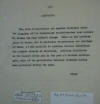
|
14.
May
10, 1927. "Review of Commerce and
Industries for the Year 1926," US Consul
Christian T. Steger, Corinto, p. 14.
"
[...] SANITATION ¶ The work of sanitation and
hygiene initiated under the auspices of the
Rockefeller Foundation has been carried on
during the year without change. While no new
activity could be begun, due to political
disturbances and shortage of funds, it was
possible to continue without diminution the
program already in existence. Sanitary
conditions in the larger cities and in the port
of Corinto continue [to be] good, none of the
preventable tropical diseases having been
prevalent during the year. ¶ Mines […]"
|
|
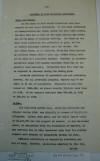
|
15.
May
10, 1927. "Review of Commerce and
Industries for the Year 1926," US Consul
Christian T. Steger, Corinto, p. 15.
"
[...] PROGRESS IN MORE IMPORTANT INDUSTRIES. ¶
Mines and Mining. ¶ In the mines of both coasts
operations have been carried on with great
difficulty. To the usual difficulty of
transportation was added, during the year under
review, the fact that one or more of the mines
usually lay within one of the zones of military
activity. Two mines on the East coast carried on
the production of gold, and two in Western
Nicaragua produced gold and silver. The San
Albino Mines, at La Libertad, which had been
acquired by American owners about a year ago,
worked during most of the year in a primitive
fashion. However, in December production began
with modern machinery which had in the meantime
been installed. Production from this mine may be
expected to increase during the coming year. ¶
Accurate statistics of production are not
available; however, for all practical purposes,
exports may be assumed to be all of production.
Shipments of gold were valued at $686,265, or
almost exactly $100,000 more than in 1925.
Silver exports declined from $78,431 in 1925 to
$33,782 in 1926. ¶ Coffee. ¶ The 1925-1926
coffee crop, which was harvested and shipped
during 1926, was slightly in excess of
18,000,000 kilograms. Prices were good, and the
total export value of $8,100,397 was the largest
on record. As was mentioned above, in connection
with the discussion of exports, it was entirely
due to this excellent crop that the country
enjoyed some measure of prosperity during the
year. ¶ Official statistics of exports by
countries are not at hand. However, statistics
compiled by this Consulate […]"
|
|
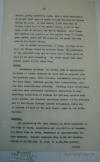
|
16.
May
10, 1927. "Review of Commerce and
Industries for the Year 1926," US Consul
Christian T. Steger, Corinto, p. 16.
"[…]
sulate, giving quantities alone, show a total
exportation of 19,6[unreadable, possibly “5”]9
short tons of coffee through the Port of Corinto
during the year. Of this amount,
7,10[unreadable, possibly “8”] tons went to
France, [unreadable, possibly “6”],413 tons to
the United States, 1,447 to Germany,
1,[unreadable, possibly “5”]09 to Holland, and
600 England. Thus France has regained her
position as the largest taker of Nicaraguan
coffee, which for the preceding two years had
been held by the United States. ¶ Due to uneven
distribution of rains, shortage of labor, and
damage caused by volcanic fumes, the production
of the 1926-1927 crop was not more than 60% as
great as that of the year preceding. The total
export crop will hardly exceed 10,000 short
tons. ¶ Woods. ¶ Production of woods, the second
item of exportation in point of value, declined
by about 30% as compared with the previous year.
This industry, represented chiefly on the East
Coast, suffered greatly from interruptions
arising from revolutionary activity. Shifting
zones of military activity made continuous
production impossible in man sections;
recruiting of workmen for military services made
labor scarce; and disputes regarding payment of
the forestal tax to the Puerto Cabezas Liberal
Government, which was in control of most of the
East Coast, added to the difficulties. ¶
Bananas. ¶ For practically the same reasons as
those mentioned in the case of woods, production
and exportation of bananas, the third item in
value, decreased in approximately the same
measure. Exports declined from 3,0[unreadable,
possibly “2”]7,147 bunches, valued at
$1,736,053, in 1925, to 2,162,745 bunches,
valued […]"
|
|
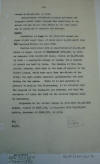
|
17.
May
10, 1927. "Review of Commerce and
Industries for the Year 1926," US Consul
Christian T. Steger, Corinto, p. 17.
"[…]
valued at $1,225,661, in 1926. ¶ Revolutionary
conditions likewise prevented the Bragman’s
Bluff Lumber Company from exploiting to any
extent its new 10,000 acre tract on the Wawa
River, due to inability to complete its railway.
¶ Sugar. ¶ Production of sugar in the 1925-1926
season was about 17,500 short tons, of which
about 11,500 short tons were exported during the
year 1926. ¶ Customs statistics show an
exportation of 10,155,619 kilos of sugar, valued
at $876,228, in 1926, as compared with
10,980,910 kilos, valued at $1,559,165, in 1925
– a negligible change in volume, but a decline
of almost one half in value. The records of this
Consulate, however, show that in the case of
exports to the United States, which were more
than two-thirds of the total, the unit prices
remained approximately the same during the two
years. While it is not possible at present to
explain the discrepancy, it is believed that the
figures of the Consulate are correct, and that
the statement of value for 1925 in the customs
figures must be erroneous. ¶ Shipments to the
United States in 1926 were 16,030,500 pounds,
valued at $499,160, as compared with 20,203,500
pounds, declared at $632,767, in 1925. ¶ 600 ¶
CTS/5."
|
|

|
18.
May
10, 1927. "Review of Commerce and
Industries for the Year 1926," US Consul
Christian T. Steger, Corinto, p. 18.
"ENCLOSURE
NO. 1 ¶ Review of Commerce and Industries –
Nicaragua, 1926 ¶ IMPORTS INTO NICARAGUA ¶ Years
1925 and 1926. ¶ Articles ¶ Value, 1925 ¶ Value,
1926 ¶ Cotton manufactures ¶ $2,569,589.00 ¶
$2,102,998.00 ¶ Foodstuffs ¶ [$]1,468,207.00 ¶
[$]1,440,751.00 ¶ Chemical products, drugs,
medicines. ¶ [$]459,980.00 ¶ [$]371,595.00 ¶
Iron and steel ¶ [$]682,245.00 ¶ [$]843,664.00 ¶
Leather goods ¶ [$]365,573.00 ¶ [$]351,384.00 ¶
Petroleum ¶ [$]146,921.00 ¶ [$]140,060.00 ¶
Gasoline ¶ [$]169,538.00 ¶ [$]169,642.00 ¶ Fibre
and vegetable manufactures ¶ [$]293,332.00 ¶
[$]259,688.00 ¶ Liquors, beers, wines. ¶
[$]280,210.00 ¶ [$]291,594.00 ¶ Other ¶
[$]3,840,696.00 ¶ [$]4,283,136.00 ¶ Totals ¶
[$]10,376,291.00 ¶ [$]10,254,512.00"
|
|
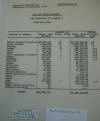
|
19.
May
10, 1927. "Review of Commerce and
Industries for the Year 1926," US Consul
Christian T. Steger, Corinto, p. 19.
"ENCLOSURE
NO. 2 ¶ Review of Commerce and Industries –
Nicaragua, 1926 ¶ IMPORTS INTO NICARAGUA ¶ (By
countries of origins) ¶ 1925 and 1926. ¶ Country
of origin. ¶ Value, 1925 Dollars. ¶ Percent of
total, 1925 ¶ Value, 1926 Dollars. ¶ Percent of
total, 1926 ¶ United States of America ¶
$7,272,191 ¶ 70[%] ¶ $7,116,715.45 ¶ 70[%] ¶
Great Britain ¶ [$]1,230,378 ¶ 11[%] ¶
[$]1,127,637.22 ¶ 11[%] ¶ Germany ¶ [$]607,118 ¶
6[%] ¶ [$]726,879.84 ¶ 7[%] ¶ France ¶
[$]283,436 ¶ 3[%] ¶ [$]253,738.38 ¶ 2.4[%] ¶
Italy ¶ [$]191,143 ¶ 2[%] ¶ [$]164,935.00 ¶
1.6[%] ¶ Spain ¶ [$]69,290 ¶ [$]57,188.27 ¶
0.6[%] ¶ Other European countries ¶ [$]204,175 ¶
2[%] ¶ [$]184,829.68 ¶ 1.8[%] ¶ Panama ¶
[$]107,225 ¶ 1[%] ¶ [$]115,250.97 ¶ 1.1[%] ¶
Honduras ¶ [$]68,175 ¶ [$]112,542.06 ¶ 1.1[%] ¶
[El] Salvador ¶ [$]19,134 ¶ [$]21,471.02 ¶
Mexico ¶ [$]35,405 ¶ [$]35,142.68 ¶ Costa Rica ¶
[$]29,588 ¶ [$]18,359.80 ¶ Guatemala ¶ [$]9,412
¶ [$]5,624.34 ¶ West Indies ¶ [$]12,735 ¶
[$]11,537.09 ¶ British Honduras ¶ [$]154 ¶
[$]870.07 ¶ Other American countries ¶ [$]17,746
¶ [$]5,966.46 ¶ China ¶ [$]4,239 ¶ 14,387.41 ¶
Japan ¶ [$]48,942 ¶ 75,377.45 ¶ Peru ¶
[$]165,538 ¶ 2[%] ¶ [$]183,992.48 ¶ 1.8[%] ¶
India ¶ [$]242 ¶ [$]22,058.20 ¶ Other Asiatic
countries ¶ [$]15 ¶ [$]8.50 ¶ African countries
¶ [$]10 ¶ [$]---- ¶ Totals ¶ [$]10,376,291 ¶
[$]10,254,512.37"
|
|
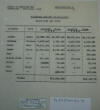
|
20.
May
10, 1927. "Review of Commerce and
Industries for the Year 1926," US Consul
Christian T. Steger, Corinto, p. 20.
"ENCLOSURE
NO. 3 ¶ Review of Commerce and Industries –
Nicaragua, 1926 ¶ PRINCIPAL EXPORTS OF NICARAGUA
¶ Years 1925 and 1926. ¶ Articles ¶ Unit ¶
Quantity ¶ Value 1925 ¶ Quantity ¶ Value 1926 ¶
Coffee ¶ Kilos ¶ 1[unreadable, possibly “0” or
“7”]822,223 ¶ $5,627,133 ¶ 1[unreadable,
possibly “0” or “7”],671,664 ¶ $8,100,397 ¶
Bananas ¶ Bunches ¶ 3,027,147 ¶ [$]1,736,053 ¶
2,162,745 ¶ [$]1,225,661 ¶ Woods ¶ Feet ¶
32,189,956 ¶ [$]1,910,793 ¶ 18,368,975 ¶
[$]1,342,238 ¶ Sugar ¶ Kilos ¶ 10,980,910 ¶
[$]1,5[unreadable, possibly “3” or “5”]9,165 ¶
10,155,619 ¶ [$]876,228 ¶ Gold ¶ -- ¶ -- ¶
[$]586,268 ¶ -- ¶ [$]686,265 ¶ Hides & skins ¶
Kilos ¶ 397,228 ¶ [$]219,452 ¶ 282,516 ¶
[$]164,512 ¶ Silver ¶ -- ¶ [unreadable] ¶
[$]78,431 ¶ -- ¶ [$]33,782 ¶ Lard ¶ Kilos ¶
80,009 ¶ [$]27,044 ¶ 5,879 ¶ [$]2,085 ¶ Other ¶
-- ¶ [--] ¶ [$]61[unreadable, possibly “6”],246
¶ -- ¶ [$]597,558 ¶ Totals ¶ $12,359,585 ¶
$13,028,72[last number cut off]"
|
|
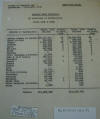
|
21.
May
10, 1927. "Review of Commerce and
Industries for the Year 1926," US Consul
Christian T. Steger, Corinto, p. 21.
"ENCLOSURE
NO. 4 ¶ Review of Commerce and Industries –
Nicaragua, 1926 ¶ EXPORTS FROM NICARAGUA ¶ By
countries of destination. ¶ Years 1925 & 1926. ¶
Country of destination ¶ Value, 1925 Dollars ¶
Percent of total, 1925 ¶ Value, 1926 Dollars ¶
Percent of total, 1926 ¶ United States of
America ¶ $7,970,740 ¶ 65[%] ¶ $6,903,764 ¶
53[%] ¶ Great Britain ¶ [$]516,341 ¶ 4[%] ¶
[$]254,628 ¶ 2[%] ¶ France ¶ [$]1,676,663 ¶
14[%] ¶ [$]2,928,439 ¶ 22[%] ¶ Germany ¶
[$]481,801 ¶ 4[%] ¶ [$]693,535 ¶ 5[%] ¶ Spain ¶
[$]405,568 ¶ 3[%] ¶ 610,893 ¶ 5[%] ¶ Holland ¶
[$]408,496 ¶ 3[%] ¶ [$]521,285 ¶ 4[%] ¶ Italy ¶
[$]90,775 ¶ 1[%] ¶ [$]280,502 ¶ 2[%] ¶ Finland ¶
-- ¶ [$]239,622 ¶ 2[%] ¶ Other European
countries ¶ [$]16,556 ¶ 155,811 ¶ 1[%] ¶ Cuba &
West Indies ¶ [$]330,178 ¶ 2[%] ¶ [$]97,218 ¶
Colombia ¶ [$]1,591 ¶ [$]44,575 ¶ Canada ¶
[$]131,322 ¶ 1[%] ¶ [$]100,130 ¶ 1[%] ¶ Panama ¶
[$]34,238 ¶ [$]16,527 ¶ Mexico ¶ [$]800 ¶ [$]309
¶ Peru ¶ -- ¶ [$]1,827 ¶ Chile ¶ [$]25,102 ¶
[$]1,242 ¶ British Honduras ¶ [$]1,320 ¶ [$]406
¶ Guatemala ¶ [$]45,218 ¶ [$]96,504 ¶ [El]
Salvador ¶ [$]54,940 ¶ [$]18,271 ¶ Honduras ¶
[$]81,024 ¶ 1[%] ¶ [$]44,066 ¶ Costa Rica ¶
[$]84,907 ¶ 1[%] ¶ [$]18,443 ¶ Other American
countries ¶ -- ¶ [$]120 ¶ China ¶ [$]1,505 ¶
[$]609 ¶ Totals: ¶ $12,359,585 ¶ $13,028,726"
|
|
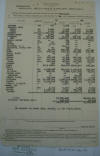
|
22.
May
10, 1927. "Review of Commerce and
Industries for the Year 1926," US Consul
Christian T. Steger, Corinto, p. 22.
"[Note:
The typed numbers on the following page are
rather blurry, making accurate transcription of
them difficult. The following transcription may
not accurately reproduce the numbers that were
originally typed.] (FORM NO. 20—CONSULAR.) ¶
(Corrected November, [unreadable].) ¶ ANNUAL
DECLARED—EXPORT RETURN. ¶ Statement showing
quantities and values of declared exports from
Nicaragua to [hole in paper] United States of
America during the year ended December 31, 1926,
and a comparison with the preceding year: ¶
ARTICLES. ¶ UNIT OF QUANTITY. ¶ 1925 ¶
QUANTITIES. ¶ VALUES. ¶ 1926 ¶ QUANTITIES. ¶
VALUES. ¶ [unreadable, possibly “Amalgam”] ¶ Oz.
¶ 287 ¶ 2,256 ¶ -- ¶ -- ¶ Animals, live ¶ Birds
¶ No. ¶ 3,442 ¶ 3,066 ¶ 4,616 ¶ 10,602 ¶ Other ¶
No. ¶ 1,515 ¶ 11,592 ¶ 2,069 ¶ 15,848 ¶ Bananas
¶ Bunches ¶ 2,538,805 ¶ 1,565,360 ¶ 1,348,921 ¶
1,110,330 ¶ Castor seeds ¶ Lbs. ¶ 6,756 ¶ 358 ¶
-- ¶ -- ¶ [unreadable, possibly “Coconuts”] ¶
No. ¶ 737,345 ¶ 20,537 ¶ 997,730 ¶ 20,953 ¶
Coffee ¶ Lbs[.] ¶ 6,068,743 ¶ 1,647,800 ¶
8,997,753 ¶ 2,352,183 ¶ Coins, silver ¶ -- ¶ --
¶ 221 ¶ -- ¶ --142 ¶ Cork ¶ Lbs. ¶ 290 ¶ 225 ¶
-- ¶ -- ¶ Cotton ¶ “ ¶ 2,090 ¶ 193 ¶ -- ¶ -- ¶
Currency, U. S. ¶ -- ¶ -- ¶ 12,000 ¶ -- ¶ -- ¶
Cylinders, empty iron ¶ No. ¶ 42 ¶ 538 ¶ -- ¶ --
¶ Gold ¶ Oz. ¶ 32,904 ¶ 556,231 ¶ 38,619 ¶
442,968 ¶ Hides ¶ Lbs. ¶ 606,241 ¶ 127,033 ¶
443,565 ¶ 105,777 ¶ Jelly, fruit ¶ “ ¶ 44 ¶ 11 ¶
-- ¶ -- ¶ Nickel ¶ -- ¶ -- ¶ 300 ¶ -- ¶ -- ¶
Rubber ¶ Lbs. ¶ 295,517 ¶ 92,181 ¶ 278,851 ¶
103,063 ¶ Silver ¶ Oz. ¶ 148,661 ¶ 89,537 ¶
64,415 ¶ 41,437 ¶ Skins ¶ Lbs. ¶ 160,883 ¶
65,225 ¶ 161,155 ¶ 53,440 ¶ Sponges ¶ “ ¶ 750 ¶
672 ¶ -- ¶ -- ¶ Sugar ¶ “ ¶ 20,203[,]500 ¶
632,767 ¶ 16[,]030,500 ¶ 499,160 ¶ Woods ¶ Cedar
¶ Ft. ¶ 4,882,257 ¶ 322,811 ¶ 2,085,538 ¶
171,933 ¶ Cocobolo ¶ Lbs[.]¶ 666,730 ¶ 6,575 ¶
2,210,731 ¶ 32,455 ¶ Coffee wood ¶ “ ¶ -- ¶ -- ¶
24 ¶ 2 ¶ [unreadable, possibly “Cenizaro”] ¶ “ ¶
-- ¶ -- ¶ 19,877 ¶ 876 ¶ Lignum vitae ¶ “ ¶
823,624 ¶ 8,062 ¶ 531,732 ¶ 8,084 ¶ Mahogany ¶
Ft. ¶ 19,837,761 ¶ 1,569,122 ¶ 14[,]371,363 ¶
1,126,276 ¶ [unreadable] ¶ Lbs[.] ¶ 1,446,503 ¶
17,634 ¶ 825,512 ¶ 11,511 ¶ Others, [unreadable]
¶ -- ¶ -- ¶ 1,450 ¶ -- ¶ -- ¶ Woods,
[unreadable, possibly “Dye”] ¶ [unreadable,
possibly “Balsas”] ¶ Lbs[.] ¶ 5,810 ¶ 4,659 ¶
8,961 ¶ 7,311 ¶ Brazil ¶ “ ¶ 1,137,367 ¶ 8,464 ¶
792,671 ¶ 12,495 ¶ [unreadable] ¶ “ ¶ 4,000,908
¶ 20,849 ¶ 4,248,102 ¶ 35,566 ¶ TOTAL ¶
$6,791,456 ¶ $6,160,780 ¶ Returned American
goods ¶ 116,008 ¶ 80,724 ¶ $6,907,444 ¶
$6,241,504 ¶ No exports to Porto Rico [Puerto
Rico], Hawaii, or the Philippines. ¶ Units as
prescribed by Schedule governing the Statistical
Clarification of Imports, General Instruction
No. 761. ¶ (Signature), American Consul. ¶ This
form is to be filled up and sent to the
Department of State, in duplicate, at the end of
each calendar year. ¶ The articles of export are
to be arranged in alphabetical order. ¶ The
statistics of declared exports to the United
States proper should be shown separately, and
three supplementary tables added for Porto Rico
[Puerto Rico], Hawaii, and the Philippines. If
no invoices have been certified for shipments to
those islands, the fact should be stated. ¶
Exports from consular agencies should be stated
separately, and should show the same separations
for the United States proper and the insular
possessions. ¶ Returned American goods should be
stated separately."
|
|
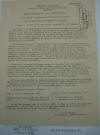
|
23.
May
10, 1927. "Review of Commerce and
Industries for the Year 1926," US Consul
Christian T. Steger, Corinto, p. 23.
"BLUEFIELDS
¶ Lu-1009 ¶ 4/8/27 ¶ DEPARTMENT OF COMMERCE ¶
Bureau of Foreign and Domestic Commerce ¶
WASHINGTON ¶ SPECIAL CIRCULAR NO. 1009 – LUMBER
DIVISION ¶ To all firms on Exporter’s Index
handling mahogany ¶ UNFAVORABLE MAHOGANY
PROSPECTS IN NICARAGUA ¶ (Consul A. J.
McConnico, Bluefields, February 11,
1927-#236354) ¶ According to reports received
from the various mahogany companies operating in
the eastern part of Nicaragua, the prospects for
a normal yield during the ensuing season are
more unfavorable than at any time for the past
thirteen years. Under normal conditions the
shipments average annually 15,000,000 board feet
of mahogany and 3,000,000 board feet of cedar
valued at $1,500,000. If 60 per cent of that
quantity is obtained this year the more
optimistic exporters will be surprised. ¶ The
mahogany year, for those connected with the
industry, begins July 1 and extends to June 30
of the succeeding year. The greater proportion
of the shipments is made during the December and
the March quarters owing to seasonal floods on
the rivers. It is during the December quarter
that the exporting companies engage contractors
to obtain specified quantities of logs. Each
contractor agrees to supply from 500,000 to
1,500,000 board feet, the total aggregating
25,000,000 board feet. Owing to the many
difficulties encountered in the business it is
not usual that more than 75 per cent of the
quantity contracted for reaches tide water. ¶
Conditions in eastern Nicaragua prevented the
exporters from making the customary contracts
during the past December quarter, and the
unsettled conditions that prevail at present
have caused them to limit their obligations in
the way of supplying contractors. The dry season
in the mahogany areas begins in January and
continues until May. It is then that trees are
felled and rolled or hauled to the nearest creek
or rivulet. The contractors can not therefore
expect but a limited output during the remainder
of the dry season. ¶ Although many difficulties
have been encountered by the operators in
floating the logs to tide water and in placing
them aboard ocean steamers at eastern ports of
Nicaragua, the quantities shipped from July 1,
1926 to January 1, 1927 compare favorably with
those of the corresponding period of last year.
¶ A comparative statement follows: ¶ July 1,
1925 to January 31, 1926. ¶ Mahogany, board
feet, 11,199,029--$920,938 ¶ Cedar, “ “
1,262,311--$105,375 ¶ July 1, 1926 to January
31, 1927 ¶ 10,914,033--------$845,742 ¶
429,478--------$58,633 ¶ During the mahogany
year from July 1, 1925, to June 30, 1926, the
quantities shipped were: 16,037,355 board feet
of mahogany valued at $1,313,061, and 2,705,919
board feet of cedar valued at $202,888. ¶ J. C.
Nellis, ¶ Acting Chief, Lumber Division."
|
|
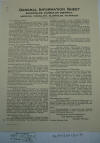
|
24.
May
10, 1927. "Review of Commerce and
Industries for the Year 1926," US Consul
Christian T. Steger, Corinto, p. 24.
"GENERAL
INFORMATION SHEET ¶ BLUEFIELDS CONSULAR
DISTRICT. ¶ AMERICAN CONSULATE, BLUEFIELDS,
NICARAGUA. ¶ Area, Topography, Climate.
¶ The district comprises the eastern half of
Nicaragua, including the Departments of Cabo
Gracias a Dios, Bluefields, Prinzapolca
[Prinzapolka], Rio Grande, Siquia, and eastern
sections of Jinotega and Chontales. Its area is
approximately 25,000 square miles. ¶ The surface
of the land is low and level on the coast, but
undulating in the interior, attaining an
altitude of 2,500 feet or more. Navigable rivers
enrich the soil with alluvial deposits during
the flood seasons as they flow towards the
Caribbean Sea. Tropical vegetation and forests
of pine and hard woods abound. ¶ The climate is
tropical, the temperature varying from 60 to 90
degrees, Fahrenheit. The rainy season extends
from June to January; the dry, from February to
May; but on the coast it rains almost daily, the
annual rainfall being about 200 inches. ¶
Population, Race, Language, Standards of
Living. ¶ The population, according to
the latest census (1920), was 44,000, classified
as follows: White people, 13 per cent.; black,
15 per cent., copper-colored (Miskito), 21 per
cent., and mixed (Spanish-Indian), 51 per cent.
Spanish is the prevailing language, but Miskito
is spoken by the Indians, and English is common
on the coast. The majority of the people live
very primitively, their purchasing power being
limited. ¶ The principal towns and their
population, are: Bluefields, 7,226; Prinzapolca
[Prinzapolka], 800; Cabo Gracias a Dios, 500;
Pearl Lagoon, 900; San Juan del Norte
(Greytown), 400; Rama, 900; and Puerto Cabezas,
500. ¶ Leading Occupations and
Industries. ¶ Banana cultivation and
mahogany cutting constitute the chief sources of
wealth. The banana sections are on the Escondido
River and the Rio Grande. Large banana interests
are being developed on the Wawa River. Mahogany
is obtained in the interior along the banks of
the various rivers. ¶ The pine lumber industry
at Puerto Cabezas is becoming more important
each year. At Bluefields are small docks for
repairing coastal vessels, a tannery, an
electric light plant, ice factories, and a small
shoe factory. Otherwise there are but few
industrial enterprises. The agricultural
possibilities are great, but not exploited.
Staple food products, such as, corn, rice, beans
and sugar are imported to meet local demands. ¶
Leading Imports and Exports. ¶
Fully 85 per cent of the imports are supplied by
the United States, consisting mainly of food
products, staple cotton goods, machinery for saw
mills, mines, and two private railways, paints,
varnishes, general hardware and cutlery, drugs,
chemicals, shoes, and paper products. In 1924,
the imports were valued at $2,698,833. ¶ Bananas
and mahogany are the principal exports, the
value of each averaging $1,500,000 annually.
Other exports are cedar, gold bullion, coconuts,
and rubber. In 1924, the exports, practically
all to the United States, were valued at
$3,296,931. In 1925, the exports to the United
States were valued at $3,801,122, consisting of
the following: Mahogany, 19,801,609 board feet,
$1,566,586; cedar, 4,845,719 board feet,
$320,914; bananas, 2,558,805 bunches,
$1,565,260; gold (bullion and dust), 21,787
ounces, $189,378; coconuts, 737,345 (number),
$20,537; rubber, 34,264 pounds, $14,912; and
miscellaneous, $123,535. ¶ Trade
Conditions: Terms of Credit. ¶
Foreigners, mostly Americans, control the
wholesale trade; Chinese, the retail trade,
especially groceries and general merchandise.
The attitude of importers is favorable to
American goods, preference being given with due
consideration for price and quality. Commercial
travelers are subject to a tax of $15, but the
law is seldom enforced. Samples are admitted
free of duty under bond providing for their
exportation. ¶ The usual terms of credit are
from 30 to 90 days against acceptances,
according to the class of goods. Credit
information may be obtained from commercial
agencies of American banks specializing in
Nicaraguan trade. Banco Nacional de Nicaragua
maintains a branch in Bluefields, the only
banking institution in eastern Nicaragua. ¶
Character of Packing Desirable.
¶ All imports should be packed securely to
withstand rough handling, and with due reference
to customs classification in order to avoid the
payment of heavy duties on containers. ¶
General Customs Policy and Regulations.
¶ American officials, under Treaty arrangement,
are in charge of the customs administration of
Nicaragua. Duties are based largely on weight,
gross and net. Exporters should exercise care in
complying with instructions furnished by
Nicaraguan importers. Bluefields is the
principal port of eastern Nicaragua, the point
of distribution for most of the imports. Other
ports of entry are Cabo Gracias a Dios, Puerto
Cabezas, and San Juan del Norte. ¶ Copies of the
Tariff of Nicaragua in English may be obtained
from the Superintendent of Documents, Government
Printing Office, Washington, D.C., at a cost of
ten cents. Information regarding the preparation
of consular invoices may be secured from
Nicaraguan Consuls in the United States. ¶
Transportation Conditions and
Connections. ¶ Two steamship companies
operate ships between New Orleans and
Bluefields; and one between New Orleans and
Puerto Cabezas. The Cuyamel Fruit Company
maintains a weekly service, calling at
Cienfuegos on its southbound trip; the Orr Fruit
and Steamship Company, a 15-day service, calling
at Cienfuegos and Jamaica when southbound. The
Vacarro Brothers operate ships every 20 days
from New Orleans to Puerto Cabezas. All mail and
freight for eastern Nicaragua should be
forwarded by way of New Orleans. ¶ There are no
highways in the district, the only means of
communication between points being by river
boats or on mule back over trails. Coastal
vessels ply up and down the coast connecting
with river launches on the San Juan River for
Lake Nicaragua. Then on Lake-steamers interior
points may be reached. Coastal vessels also
maintain irregular schedules between Colon and
Bluefields. ¶ Postal Regulations and
Rates. ¶ The postage rates of the
United States apply to mail matter from the
United States to Nicaragua. On letters, or other
first class mail to Nicaragua, the rate is two
cents an ounce or fraction thereof. ¶
Waiver. ¶ No responsibility is assumed
by this consulate for the business standing of
firms submitted upon the request of American
exporters. ¶ Communications should be addressed
to: ¶ THE AMERICAN CONSUL, ¶ Bluefields,
Nicaragua. ¶ Revised February, 1926."
|
|
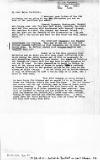
|
May 11, 1927. Letter
from Col. Louis M. Gulick, Tipitapa, to "My dear
Major Bartlett," p. 1.
"CP. 5th Regiment ¶ TIPITAPA, NICARAGUA ¶
11 May 1927. ¶ Time 1420 ¶ My dear Major
Bartlett:- ¶ I received your letter of the 9th
yesterday and am going to try and straighten you
out on some of the questions you asked. ¶
General Moncada, Montenegro, Wassmer and Correa
came into Tipitapa last night, spending the
night here and this morning held conference with
General Stimson, the American Minister, the
Admiral and General Feland. I can not give you
the details of the discussion as I do not know,
but I can assure you that the Red cause was well
looked after. ¶ You mentioned Escamilla and
Beltram Sandovalare [Sandoval are] out raiding.
This may or may not be true but General Moncada
informed us that Escamilla was in Boaco with
Daniel Mena. He further stated that General
Sandino and Sandoval were out. ¶ Boaco is in the
area assigned your Battalion and no doubt you
will have great difficulty with roads during the
rainy season and it will be necessary to move
everything forward by pack train. You speak of
Comolapa and Comoapa as places that you may have
to move supplies to out via El Paso. In this
connection it would be better in most of the
places east of Boaco to supply from a railhead
at Granada by boat to the nearest points on the
lake to the places we might occupy. I am not
ready yet to decide whether it will be necessary
to have a ration dump at El Paso, but I doubt it
very much. ¶ Your 43rd Company is being brought
in here today for bivouac and we expect it to go
forward to Boaco via Tuestepe within the next
few days. The Red forces are having rations and
clothing sent to them at Boaco early tomorrow
morning. The guard for this train will be from
the 43rd Company with Brown commanding (one
section). They will go forward to remain and the
balance of the company, plus one Machine Gun
Section, will leave here when ordered, taking 30
days rations and reserve ammunition. A small
guard from the First Battalion will also go
along to bring the bull cart train back here. .
. . "
|
|
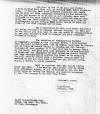
|
May 11, 1927. Letter
from Col. Louis M. Gulick, Tipitapa, to "My dear
Major Bartlett," p. 2.
"... Relative to the 37 MM guns and Stokes
– I have decided that they will go forward with
their organization. I realize that your infantry
companies are short, but we will not make
temporary transfers in the Battalions as you may
expect to be filled up and probably made over
strength in the near future from one battalion
coming from Haiti and one from Quantico. Your
battalion will also be supplemented by one
company from these troops to take the place of
the 51st Company now at Rama. ¶ As I understand
it now, your radio batteries are being recharged
at Managua through Granada. Is this so? In the
future you will have to use any means of
transportation to get your batteries back to
Managua and your recharged batteries forward. ¶
The question of transporting Captain
Livingston’s company up to the Tipitapa River, I
have decided that we would probably save time by
taking them back to Granada and by train to
Sabana Granda [Sabana Grande] or Managua and out
through Tipitapa if this appears to be the best
way to occupy towns to the north, but your area
will probably be to the eastward of Boaco and
the companies of your battalion should better
use lake transportation nearest the towns to be
occupied. You will receive orders when a [an]
infantry company goes out whether or not you
will take a machine gun section along, which, I
think, is quite probable. ¶ Mail is expected
from the United States about the 15th. I am
sendint [sending] this letter over to Tisma this
afternoon, hoping to get it through to you via
the truck which is taking the machine gun
section belonging to the 77th Company to El Paso
from Tisma. ¶ Sincerely yours, ¶ L.M. GULICK ¶
Colonel, USMC ¶ Major H.G. Bartlett, USMC, ¶
Comdg. 2nd Batt. 5 Regt., ¶ El Paso, Nicaragua."
|
|

|
May 13, 1927.
Letter from Wilhelm Hüper, German
Vice-Consul, Matagalpa, to Major M. E. Shearer,
USMC, Commanding Office, 3rd Battalion, 5th
Regiment, Matagalpa.
"Matagalpa,
May 13th, 1927. ¶ Major M. E. Shearer, ¶
Commanding Officer, ¶ 3rd. Battalion – 5th
Regiment, ¶ Matagalpa, Nicaragua, C. A. ¶ Sir: ¶
As representative of the coffee plantation
“HAMONIA”, property of Mr. John Bosche, now a
resident of Piedmont, California, I beg to
report the following: ¶ On May 10th, 1927, at
about four in the afternoon, more or less sixty
armed Liberals came to the “Hamonia” and took
byforce [by force] the following animals: ¶ 1
extra fine riding mule valued at - $150.00 ¶ 1
horse (Caballo tordillo) “ “ “ 75.00 ¶ 1 “ ( “
salpicado) “ “ “ 40.00 ¶ 1 “ ( “ “ ) “ “ “ 30.00
¶ 1 mare (Llegua tordilla) “ “ “ 30.00 ¶ 1 horse
(caballo sorrillo) “ “ “ 25.00 ¶ 1 “ ( “ melado)
“ “ “ 15.00 ¶ 4 mules all first class “ “ “
210.00 ¶ Total $575.00 ¶ The Mandador or
Overseer on the place protested only to be
threatened by the Liberals in every way.
According to information I have received, the
leaders of this Liberal gang were Dr. Narciso
Gonzalez, Adan Medina and Pedro Picado all of
Jinotega. ¶ As I will have to file claim in
order to recover the loss above mentioned, I
will appreciate it very much if you would
acknowledge the receipt of this report, copy of
which I hold, to present as part of my proofs
later on. ¶ Thanking you in advance for your
courtesy, believe me, Sir, ¶ Yours very
respectfully, ¶ Wilhelm Hüper ¶ German
Vice-Consul."
|
|
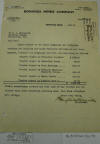
|
May 14, 1927.
Letter from Benjamin C. Warnick, President,
Bonanza Mines Company, to US Consul M. J.
McConnico [sic], Bluefields.
"DIRECT
ALL CORRESPONDENCE VIA BLUEFIELDS, NICARAGUA ¶
[hole in paper] C. WARNICK, ¶ PRESIDENT AND
GENERAL MANAGER ¶ CABLE ADDRESS: ¶ WARNICK ¶
PHILADELPHIA ¶ BLUEFIELDS ¶ BONANZA MINES
COMPANY ¶ EXECUTIVE OFFICE ¶ 1218 LOCUST STREET
¶ PHILADELPHIA, PA. ¶ U. S. A. ¶ MINES: ¶
DISTRICT OF PIS-PIS ¶ NEPTUNE MINE, May 14 1927
¶ Mr[.] M. J. McConnico, ¶ American Consul, ¶
Bluefields, Nic. ¶ Dear Sir: ¶ Please submit to
the Mixed Comission [Commission] the following
vouchers for supplies and money furnished
Liberals as per their demands, vouchers are
originals herewith enclosed, being as follows: ¶
Voucher signed by Francisco Gonzales $154.88 ¶
Voucher signed by Sebastian Perez … [$]54.50 ¶
Voucher signed by Luis Arroliga ….. [$]500.00 ¶
Voucher signed by Fernando Gutierrz [Gutierrez?]
¶ Humberto Milina … [$]266.60 ¶ Voucher signed
by Ramon Gradis …… [$]500.00 ¶ Voucher signed by
Rodolfo Dorn B ….. [$]48.60 ¶ $1524.58 ¶ Kindly
acknowledge receipt and send copy of any receipt
you may receive from Mixed Comission
[Commission] covering same. Your kind attention
will oblige, ¶ Yours very truly, ¶ Benjamin C.
Warnick ¶ President."
|
|
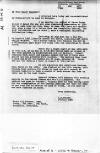
|
May 16, 1927. Letter
fro Colonel L. M. Gulick, Managua, to "My dear
Major Shearer," Matagalpa.
"HEADQUARTERS
5TH REGT. ¶ MANAGUA, NICARAGUA. ¶ 16 May 1927 ¶
Time 1555 ¶ My dear Major Shearer:- ¶ I returned
here today and re-established my Headquarters in
camp in Managua. ¶ I am sending you copies of
Force Order Number 8 dated 8th May and Arms
Commission Memorandum of 11th May to make sure
you have them, in case they have not reached
you, also a copy of a letter from the Commanding
General, for your information and on which I
sent a radiogram requesting information today. ¶
Yesterday at Tipitapa was a big day. We handled
1357 Liberals across the River, including 169
armed and 63 wounded. This number coming into
Managua was met by a celebration last night but
today they are dispersing to their homes. ¶
There was a fight night of May 15th-16th at 3:00
a.m. at La Paz [La Paz Centro] in which 300
rebels made an attack on the town guarded by
Conservatives and our Marines. Street fighting
took place and Captain Cannon [Buchanan] and one
Private were killed and two privates were
wounded. The Marines then took a hand and drove
the Rebels out of town, killing 13. These are
all the details I have in regard to this matter.
¶ We are expecting 300 additional Marines from
Haiti on the 19th. One Platoon of the 17th
Company left Granada this morning for Rivas by
boat and will return to Granada tomorrow to take
a number of Reds across the lake on their way to
the East Coast. ¶ General Stimson left Managua
this morning enroute to the United States via
the U.S.S. TRENTON. The Admiral has gone to
Corinto. Colonel Rhea is busy making plans for
the organization of the Guardia Nacional but
does not seem to get very far on account of lack
of funds. As you know he was made Director in
Chief. ¶ Very sincerely, ¶ L.M. GULICK, ¶
Colonel USMC ¶ Major M.E. Shearer, USMC, ¶
Comdg. 3rd Batt., 5th Regt., ¶ Matagalpa,
Nicaragua."
|
|
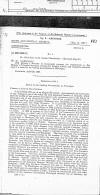
|
1.
May
19, 1927. "Record of the Leading
Personalities in Nicaragua," Mr. C. Kerr,
Guatemala, to Sir A. Chamberlain, London, p. 1.
"[This Document is the Property of His
Britannic Majesty’s Government.] ¶ No.
8—ARCHIVES. ¶ 423 ¶ SOUTH AND CENTRAL AMERICA ¶
[May 19, 1927.] ¶ CONFIDENTIAL ¶ SECTION 1. ¶ [A
2937/2937/8] ¶ No. 1. ¶ Mr. Clark Kerr to Sir
Austen Chamberlain.—(Received May 19.) ¶ (No.
45. Confidential.) ¶ HIS Majesty’s Minister at
Guatemala presents his compliments to His
Majesty’s Principal Secretary of State for
Foreign Affairs, and transmits herewith copy of
a record of the leading personalities in
Nicaragua. ¶ Guatemala, April 26, 1927. ¶
Enclosure in No. 1. ¶ Record of the Leading
Personalities in Nicaragua. ¶ Chamorro, General
Don Emiliano. ¶ ILLEGITIMATE son of an
illegitimate father; approximately about 55
years of age; belongs to one of the oldest and
most important families of Granada, which since
the middle of last century has played a very
prominent part in the history of Nicaragua and
of the Conservative party. Two of his ancestors
(General Frutus Chamorro and Don Pedro Joaquín
Chamorro) were Presidents of the Republic, as
was also his uncle, Don Diego Chamorro. It is
generally believed by the family that the
presidency is theirs by divine right. In the
revolution of León against the Liberal régime of
President Zelaya in 1896, Emiliano Chamorro, who
had already taken part in the war against
Honduras in 1894, figured as a subaltern in the
forces of Zelaya. In 1906 he appears as chief
officer of the Conservative Revolution of Lake
Nicaragua, on which, with a few companies, he
took possession of the small armed vessel “93,”
belonging to the Government. At the end of the
revolution he migrated to Honduras, and only
appeared for a brief period during the war
between Nicaragua, [El] Salvador and Honduras in
1907, in a surprise attack of no importance
against Zelaya at Dipilto. Chamorro appears as
an important figure in the revolution of 1909,
which started on the Atlantic seaboard with the
rebellion of the Governor of the Coast, General
Juan Estrada, against President Zelaya. With the
fall of Zelaya, the revolution continued against
President Madris [Madriz], and Chamorro, with
skill and bravery, waged a mountain warfare,
bringing a column from the coast by Chontales
and Matagalpa. This body of troops was
annihilated in open battle by Government troops
in the marshes of Tisma, Masaya. General
Chamorro, now a fugitive, returned to the east
coast, and his name only reappears when the
revolutionary forces under General Mena and
Moncada arrived at Granada; then Chamorro
figures as a delegate of the revolutionary
President Juan Estrada, but he had no military
power. The Government of the United States
recognises as President General Juan Estrada and
Vice-President Don Adolfo Díaz. General Chamorro
was advised to visit his properties in Honduras.
He returned, however, some months after, when
General Estrada resigned and Vice-President Don
Adolfo Díaz took his place. It was really
General Luis Mena who took charge of the
Government. This man, however, rebelled against
Díaz, and in July 1912 a bloody revolution began
with the bombardment of Managua and the siege
and sack of Masaya. General Chamorro now figures
as General-in-chief of the Díaz Government. His
aspirations for the presidency were frustrated
by the decisive intervention of the American
Minister, Weitzel, and Don Adolfo Díaz was
elected President; whilst Don Emiliano Chamorro
was sent to Washington as Minister for
Nicaragua. In Washington he gained the
sympathies of the Department of State, which
gave its good offices (mission of Admiral
Caperton to President Díaz) to secure his
election as President in 1917. During his
presidential term, and under pressure of the
American Government, Nicaragua declared war on
Germany, but […] ¶ [133 t—1]"
|
|
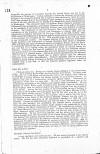
|
2.
May
19, 1927. "Record of the Leading
Personalities in Nicaragua," Mr. C. Kerr,
Guatemala, to Sir A. Chamberlain, London, p. 2.
"[…] frequently his manner of procedure
towards the United States was not to the
satisfaction of Washington. Useless attempts to
induce the American Government to agree to his
re-election decided him to agree to sham
elections by which his uncle Don Diego succeeds
him in the presidency under promise to restore
the presidency to him at the next elections and
to appoint him immediately again plenipotentiary
in Washington. The premature death of President
Diego Chamorro prevented the fulfilment of this
arrangement, and General Chamorro went to the
polls to be beaten by the candidate of the
coalition (elections, however, were very
doubtful as regards fairness). The vacillations
of this new Governor, Don Carlos Solorzano, and
the withdrawal of the American marines from
Nicaragua in August 1925, gave the opportunity
to General Chamorro for his coup d’Etat of the
25th October, 1925, which caused the resignation
of Solorzano and the proclamation of General
Chamorro as his successor by a Congress ad hoc.
This was the cause of the civil war which is now
ruining the country. The constant hostility of
the American Government finally resulted in the
withdrawal of General Chamorro from power in
November 1926, and being sent upon a diplomatic
mission to England, France, Italy and Spain. It
is generally believed that the political career
of General Chamorro may be at an end, and that
he is rapidly losing the popularity which he
enjoyed among his followers. During his first
term of presidency no one has any complaint
against him as a Governor, as it was observed
that he is very inclined to forget and to pardon
offences even of a personal nature. During his
second administration the abnormal state of
affairs frequently obliged him to bestow favours
upon his adherents disastrous to the public
administration. Political opponents tried to
accuse him of being a person lacking in honesty
in dealing with public funds, but it is doubtful
whether such is the case, or that his financial
position improved under the circumstances. ¶
Díaz, Don Adolfo. ¶ Fifty-one years old. Belongs
to a family always affiliated to the
Conservative party. He is of Costa Rican origin,
but his ancestors were Italian. He began work in
Managua as a book-keeper and afterwards went to
the Atlantic coast, where he entered into a
mining business and became manager of an
American concern. In 1897 he took part in a
revolutionary movement against Zelaya.
Afterwards he migrated to Costa Rica for some
years. He took a most important part in the
revolutionary movement on the Atlantic coast
against Zelaya and Madris [Madriz]. He was
Minister of Public Works under President Juan
Estrada, whom he succeeded as Vice-President
when for political motives this latter resigned
from the presidency in his favour. During the
first months of his Government he was President
in name only, as all the power was in the hands
of General Luis Mena, Minister of War, but when
Mena rebelled against President Díaz he was
able, with the aid of the American Government,
to dominate the situation, and in reality held
the power. Intervention in his favour of the
American Minister, Weitzel, was the reason for
his success without opposition in the
presidential elections of 1912 (ad usum
delphini). During his administration and with
the help of the American Government the gold
standard was established, the customs service
reorganised, the Nicaraguan national debt was
reduced, partly thanks to the reductions not
always just, made by the Mixed Commission of
Claims. He concluded the contract with the
United States for their inter-oceanic canal.
Owing to the revolution of General Mena,
American armed intervention took place for the
first time during the Díaz Administration. He
has never been popular, and has always been
charged with having brought about the
intervention of the United States, although that
without this decisive fact political passions
and party factions would never allow an era of
peace which would permit the country to develop
its natural resources. He was designated
President of the Republic by election on the
14th November, 1926, by National Congress after
the resignation of General Chamorro. His first
period of administration was fraught with
serious economical difficulties, and it appears
that the second will be no less serious than the
first, in view of grave political and
administrative questions. ¶ Moncada, General
José María. ¶ A very intelligent and ambitious
man. He has always belonged to the Liberal
party. His life has been essentially dedicated
to journalism as a reporter and […]"
|
|
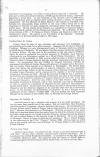
|
3.
May
19, 1927. "Record of the Leading
Personalities in Nicaragua," Mr. C. Kerr,
Guatemala, to Sir A. Chamberlain, London, p. 3.
"[…] contributor to newspapers, or as
editor of the political paper the “Centinelo.”
He took part in the León Liberal revolution of
1896 against General Zelaya, afterwards
migrating to Costa Rica. In the revolution of
the Atlantic coast of 1909-10 he held an
important post as military chief, having
directed a number of important engagements. He
was Minster of Home Affairs in the Cabinet of
President Juan Estrada, but subsequently being
involved in the coup d’Etat which led to the
resignation of Estrada, he again emigrated,
remaining absent from Nicaragua for several
years. He has always shown himself as a
supporter of American politics, and only
recently appears to have become anti-American.
He is Minister of War in the Cabinet of Dr. J.
B. Sacasa at Puerto Cabezas and General-in-chief
of the revolutionary forces. He aspires to the
Presidency of the Republic. Generally considered
to be the best military leader in Nicaragua. ¶
Cuadra Pasos, Dr. Carlos. ¶ Lawyer about 50
years of age, extremely well educated, very
intelligent, an exceptionally good orator, but a
weak character. Obsessed with the idea of
becoming President. Belongs to a very
distinguished family of Granada which has
already provided former Presidents. He was
absent from the country during the presidency of
General Zelaya. He took part in the revolution
on the east coast in 1909-10, where he acted as
counsellor and private secretary to President
Juan Estrada; afterwards he was Nicaraguan
member on a Mixed Claims Commission. He was
candidate for the presidency in 1916, and he
ceded his votes in favour of General Chamorro
when it became apparent that the American
Government was aiding this latter. An
arrangement was not fulfilled by General
Chamorro whereby he guaranteed the friends of
Cuadra Pasos participation in Congress and in
the courts, and for Cuadra Pasos himself to be
Minister at Washington. He retired from public
life during the administration of General
Chamorro, but was appointed Minister for Foreign
Affairs in the Government of Don Emiliano
Chamorro’s uncle, President Diego Chamorro, and
he represented the republic at the Pan-American
Congress at Santiago de Chile. During the
elections of 1924 he was a member of the
Coalition party against the candidacy of
Chamorro, but when it was evident that he was
not the favoured candidate of President Martínez
he went over to the side of General Chamorro.
After the coup d’Etat of the 25th October, 1925,
he was nominated President of Congress, and in
that character was sent to Washington in order
to obtain the recognition of Chamorro by the
American Government—a mission which failed. On
his return from the States he acted as
intermediary between Chamorro and the American
Legation to try and save from ruin the
Conservative party. In the character of
representative of Chamorro, he was a delegate at
the conferences of the “Denver,” October 1926.
He is at present the most important Minister in
the Cabinet of Don Adolfo Díaz, as Minister for
Foreign Affairs. ¶ Espinoza, Dr. Rodolfo, R. ¶
About 50 years of age, a physician and surgeon
of a very high reputation. He has for many years
resided out of the country, first in Costa Rica,
then Honduras, and afterwards in Guatemala,
where he practised with success. He was Minister
for Foreign Affairs under President Zelaya, and
in which position he was sent to Costa Rica.
Minister Plenipotentiary in Washington. With the
exception of two years, 1919-20, he has been
absent from the country since the fall of the
Liberals from power. He holds a high position in
Central American Masonry, having attained the
grade of 33, and is Grand Master of the Supreme
Lodge of Honduras. He is very popular in
Managua; always in hopes of attaining the
presidency. Was a Liberal delegate at the
conferences in the U.S.S. “Denver,” October
1926. He has taken an active part in the present
civil war, and is Minister of Foreign Affairs in
the Cabinet of Puerto Cabezas. ¶ Pereira, Don
Tomás. ¶ About 57 years of age; a merchant of
León. Enjoys a very good reputation and is well
liked. He has never, however, attained great
political distinction. He is president of the
Liberal Nationalist Committee. Is a brother of
the late Mgr. Pereira y Castellon, Bishop of
León. Was deported from the country in March
1926 for conspiring against the Government of
Don Adolfo Díaz; he is now in Costa Rica. [...]"
|
|
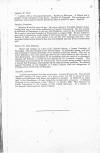
|
4.
May
19, 1927. "Record of the Leading
Personalities in Nicaragua," Mr. C. Kerr,
Guatemala, to Sir A. Chamberlain, London, p. 4.
" [...] Aguado, Dr. Enoc. ¶ Lawyer, with a
very good reputation. Resides at Managua. A
Liberal and a member of the committee of the
party. Member of Congress. His sentiments are
moderate, and it appears that he has always been
in favour of peace. Aged 40. ¶ Parajon,
Francisco. ¶ Between 40 and 50 years of age. He
was a colonel in President Zelaya’s army, having
been one of the cadets instructed by Captain
Uebersetzig. He was present at the battle of
Namasigue in the war with Honduras, where he was
wounded twice. He is said to have been wounded
at Tamarindo in August 1926. He has suffered a
good deal of persecution at the hands of the
Conservatives. He owns a farm in the district of
León, and is well spoken of by all who have
dealings with him. The wounded Conservatives
whom he has sent into hospital say that he has
treated them well. ¶ Sacasa, Dr. Juan Bautista.
¶ Doctor and surgeon, is a son of Dr. Roberto
Sacasa, a former President of Nicaragua. He was
educated in the United States. Is personally
honest, well bred and incapable of taking
advantage of his position to his own benefit.
Was not an active politician, but a few years
ago went to the United States in the interests
of the Liberal party. His candidacy for the
presidency was the result of a referendum
amongst the Liberals, in which he was opposed by
Dr. Leonardo Argüello. This referendum was
promoted by Dr. Julian Irias. He is scarcely
strong enough to govern a country like
Nicaragua, but possesses all the other necessary
qualities. Proclaimed himself President of the
Republic at Puerto Cabezas after the designation
of President Don Adolfo Díaz in Managua. ¶
Argüello, Leonardo. ¶ A doctor and surgeon, but
does not practise. Is about 43 years old. Has
devoted himself to politics for many years. Is a
great orator and full of advanced ideas. Affable
and intelligent, very clever, but inclined to
intrigue. In 1912 took an active part in the
Government of León during the revolutionary
occupancy. A delegate (Liberal) at the
conferences of the “Denver” in October 1926. Was
Minister for Public Instruction in the Cabinet
of Don Carlos Solorzano. Is a member of Dr.
Sacasa’s Government at Puerto Cabezas."
|
|
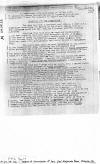
|
1.
May 22, 1927. Report of
Commission of General José Alejandro Pasos, Jefe
de Militar, Boaco, to Captain Louis E. Fagan, CO
43rd Co., p. 1.
"To:
Captain Louis E. Fagan ¶ CO 43rd Co. ¶
REPRODUCED AT THE NATIONAL ARCHIVES ¶ In
complinace [compliance] with your order of 16
May 1927. To procede [proceed] to disarm the
patrols and to organize provisional authorities.
I have the pleasure to report the following: ¶
CARRYING OUT THE COMMISSION ¶ The same day that
I received your orders, I sent out a commission
consisting of: Myself as Chief with twenty four
of the Citizen Guard and Cpl. William N. Lindsey
and Pvt. William L. Wronsky. ¶ Starting from
this city we repaired thetelegraph [the
telegraph] line that connects this city with
Matagalpa as far as MuyMuy. At the Pass of Sacal
we organized a safety guard a subordinate of the
Citizen Guard. We left in command Tomas Gonzalez
with seven men armed with Springfields and
thirty rounds of ammunition each. ¶ Two miles
from Sacal we were threatened by the patrol of
the Conservative Army, according [to] the
information from three prisoners who said the
same was commanded by Roman Hernandez. ¶ The
prisoners whom they had set free, informed me
that the patrol had destroyed cattle, killed
peaceful citizens and taken all kinds of spoils
and property. ¶ They also informed me that they
had burned the house on the La Primerava
Hacienda, property of a resident of this city, a
Liberal, Doctor Leopoldo Ramierz [Ramirez?]
Mariena; a malicious and disgraceful act. ¶ The
same day I slept with my Guard, with a strict
watch in the Neuva Guinea [Nueva Guinea]
Hacienda of Andez Montenegro. ¶ The following
day at 1008 I left Neuva Guinea [Nueva Guinea]
for Tierra Azul; at this place established
another subordinate Guard consisting of citizens
Conservative and Liberal noted for honesty and
whose names I send you on a separate sheet. ¶ To
this subordinate Guard I left twenty rifles of
those new Springfields and two Remingtons. These
were placed at the disposition of the honorable
citizens who wished to guarantee order in that
place. ¶ In this same place Tierra Azul; and
obedient to your instructions and also of the
inspector of telegraphy of this Zone, namely
telegrapher I. Filadelfo M. Ayorga, a person
that to my opinion is ideal for this work, from
Tierra Azul we set out for San Vincent and Olama
where the guard of my cargo were cared for at a
Liberal Hacienda of that place, who manifests
sympathy naturally and logically for the
American Marines. ¶ From Olama we arrived at
Matiguas, later we went to Horcon, Las Lomas and
Paso Hando. In Matiguas the citizens of this
place without distinction of color, politics
they are of common accord and unanimously
satisfied with the provisional military Chief
and the Alcalde for that jurisdiction. Jacinto
[…]"
|
|
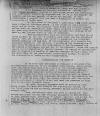
|
2.
May 22, 1927. Report of
Commission of General José Alejandro Pasos, Jefe
de Militar, Boaco, to Captain Louis E. Fagan, CO
43rd Co., p. 2.
"
[…] Gadea acting provisional sergeant of the
Citizen Guard. There also the Senoras Naciso
Herrera, Carlos Ortega, Ismael Garay and Ignacio
Gonzalez; all of which are faithful Conservative
with the exception of Senoras Gadea and Garay
who are Liberals. ¶ From Matiguas we received
authentical [authentic] information that Miguel
Espinosa, Alcalde of that place before the
revolution was continually committing
depredations. He is at the head of one hundred
and ten men seventy of which are mounted. At
your convenience I suggest that you name a
commission to effect the collection of these
arms. ¶ In this place of Matiguas I understand
that there seventeen rifles of different makes,
in bad condition and probably could not be
fired. The Military Chief Gadea has fourteen
Mauser rifles with out [without] ammunition.
Senor Gadea promises to send these to oe [me?],
when they receive the twenty five Springfields
from me to be used by the Citizen Guard in case
of necessity. ¶ Nothing manifests that the
actionsare [actions are] verified in all these
places. At the end of nineteen days these and
the neighbors nearby, that are integral part
offer to establish the telegraph between
Matiguas and Muy Muy, if the Government will
furnish the necessary material. For my part, I
recommend the construction of this line,
becoming with the benevolence of the Government
and the people of Matiguas, the key way to the
Atlantic Coast and extending to the jurisdiction
of the Rio Grande. It should be appropriate then
to suggest the sending of American Marines to
this place, for the efficiency of the
provisional authorities namely, to assure the
restoration of order in this neighborhood. ¶
CONCLUSION OF THE MISSION ¶ Of so much time
mentioned in Matiguas I returned from my
commission from you to the Hacienda Nueva
Guinea, where having left Cpl. Adrian Figueroa
with a part of the Citizen Guard to carry out
special instructions that I ordered: to the
effect, Cpl[.] Figueroa with diligence worthy of
mention, recovered a Hotchkiss Cannon 7.6, that
the Government Forces sent to General Bartolome
Viquez. They had abandoned the hill of Las
Galias to the front of Cerro de Palo Alto. The
cannon together with the rifles before
mentioned, I bring with me, and have the
pleasure to turn over to you this valuable
cargo. ¶ The same Corporal Figueroa made an
excursion from Nueva Guinea to Cerro del Caballo
and surrounding places. In the first place he
was violently attacked by the patrol of the
Government Army. ¶ Some individuals under the
name of (Gonzalez) that before and since the war
are actually qualified as the offenders in this
jurisdiction, according to public opinion, and
in the records of the Alcalde of this city;
these individuals under the name of Gonzalez and
whose real names are: Dionisio, Guillermo,
Nativadad and Laureano; they carry with them a
Lewis machine gun. As they declare themselves,
and having three thousand (3000) rounds of […]"
|
|
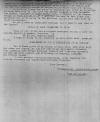
|
3.
May 22, 1927. Report of
Commission of General José Alejandro Pasos, Jefe
de Militar, Boaco, to Captain Louis E. Fagan, CO
43rd Co., p. 3.
"[…]
ammunition, with three huts serving as guard
houses, I do not think adviseable [advisable] to
attack the “Gonzalez” as my guard is so few in
number and they have an escape in the mountains
where they are loding [lodging?]. ¶ In my tour I
have the honor to complete your order as
telegraphed from this city 18 May 1927 “To
effect passage to the Hacienda San Rafael,
property of Louis Felipe Mora, a fighter of the
Conservatism in this jurisdiction” I notified
the men in this place the adviseability
[advisability] of bringing in the national
rifles that they have in their possession. ¶ As
yet I have no immediate results, but I hope to
see them in the future. ¶ TOTAL OF ARMS
COLLECTED IN TOUR. ¶ Then of the rifles and
equipment entrusted to me: I have the honorto
[honor to] report: L [1?] cannon, Hotchiss
[Hotchkiss], 7.6 ¶ 72 Rifles, various makes ¶ L
[I] hope to bring to you tomorrow 11 more which
were promised to me. ¶ COMPONENTS OF THE
CITIZENSGUARD [CITIZENS GUARD] OF MY COMMAND ¶
The Citizen guard of my charge in this tour,
with your help the order and discipline and the
activities were above standard. Your elements
have earned personal comment and I am very
grateful for the splendid conduct and efficiency
of Corporal Liendsey [Lindsey?] and Private
Ronski [Wronski?][.] ¶ I also mention Corporals
Celestino, Cruz, Figueroa and Joaquin Solorzano
and especially Fortunato Barquero. ¶ Your
Servant. ¶ General Jose Alexjandero Pasos ¶ Jefe
de Militar."
|
|
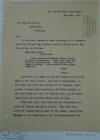
|
1.
May
28, 1927. Letter from A. B.
Brand and [J. Ma. Paton], San Juan del Norte, to
US Consul A. J. McConnico, Bluefields, p. 1.
"San
Juan del Norte, Nicaragua, ¶ May 28th, 1927. ¶
The American Consul, ¶ Bluefields, ¶ Nicaragua.
¶ Sir: ¶ On the 25th instant we sent a message
to be forwarded from the Colorado Bar wireless
station, which we now beg to confirm, as
follows: ¶ “American Consul, ¶ Bluefields. ¶
“Five hundred disbanded troops should be moved
immediately. Here five days committing
depredations. Authorities Greytown no control.
Food and military guard required. ¶ Brand. ¶
Paton.” ¶ The first lot (some 300 and odd) came
down from the Lake on the 21st instant. The
second installment, on the 24th, and since the
sending of our message, above quoted, a fresh
bunch arrived on the 27th instant, so that now
there are over six hundred here, and we
understand there are several hundred more to
come. ¶ These men claim that they are the
discharged soldiers of General Moncada’s forces.
That they were promised transportation back to
the coast; coming from Managua to Fort San
Carlos, at the south-eastern end […]"
|
|
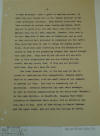
|
2.
May
28, 1927. Letter from A. B.
Brand and [J. Ma. Paton], San Juan del Norte, to
US Consul A. J. McConnico, Bluefields, p. 2.
"[…]
of Lake Nicaragua, under a guard of American
marines, by whom they were turned over to the
“tender mercies” of the local government
officials. They further claim that they have
received no rations since leaving San Carlos,
which may not be quite true; but that while they
were with the Marines they had all they
required. However, they seem to be more than
able to take care of themselves, and as soon as
they arrived here proceeded to commandeer all
the cattle they could lay hold of, and to ravage
the nearby plantations, which were just
recovering from the attentions bestowed on them
by the plundering savages that passed through
here last year. They have killed off most all
the milk cows in this neighborhood and are now
robbing the hen-roosts, and say openly that, if
they are not provided with food, they will sack
the town. ¶ Our local Governor who, by the way,
says he has received no instructions from
headquarters, frankly admits that he is
powerless, with the small force at his command,
to prevent all this. The town is completely out
of provisions. Governor Gutierrez has sent radio
messages, as well as written communications by
the motor-boat “Venture,” to the Jefe Politico,
at Bluefields, begging that transportation be
furnished these people, but no attention has
been paid to him. Most of them belong to Puerto
Cabezas and the upper coast, and are only too
willing to return […]"
|
|
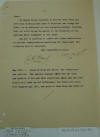
|
3.
May
28, 1927. Letter from A. B.
Brand and [J. Ma. Paton], San Juan del Norte, to
US Consul A. J. McConnico, Bluefields, p. 3.
"[…]
there. ¶ We cannot bring ourselves to believe
that these men have been wilfully [willfully]
sent here to terrorize and ravage the place, so
we addressed you the foregoing message, trusting
that you would bring the matter to the attention
of the American Naval Commander on the coast. ¶
Can you do anything to induce the proper
authorities to provide transportation facilities
for these men? The situation here is desperate.
¶ Very respectfully yours, ¶ A. B. Brand ¶ J.
Ma. Paton ¶ May 30th. -- Since writing the
above, the “Victorine” has arrived. The captain
demands C$200 for the trip. One hundred of the
men have subscribed C$100 and the town people
will make up the difference; but there are still
five hundred men left, and more to come from the
interior."
|
|

|
May 28, 1927.
Daily report of intelligence, Naval
Forces on shore in western Nicaragua (on
Cabulla's death), p. 1.
"Naval Forces on shore in western
Nicaragua, ¶ Managua, Nicaragua, ¶ 28 May, 1927.
¶ Daily report of Intelligence. ¶ From: 0001 to
2400 ¶ (a) GENERAL STATE OF TERRITORY OCCUPIED.
¶ Quiet. ¶ (b) ATTITUDE OF CIVIL POPULATION
TOWARD NAVAL FORCES. ¶ (1) Press: No change
since last report. ¶ (2) Other sources: No
change since last report. ¶ (c) ECONOMIC
CONDITIONS. ¶ Usual activities at the market; no
change in labor situation since last report. ¶
(d) FRICTION BETWEEN TROOPS AND CIVIL
POPULATION. ¶ None reported. ¶ (e) POLICE
OPERATIONS. ¶ Two (2) men arrested by civil
police for minor thefts. Two (2) men arrested
for attempted house breaking. One (1) man
arrested for theft of a horse. Two members of
the Guardia Nacional arrested for insulting the
police. Four (4) men arrested for intoxication.
¶ (f) MILITARY OPERATIONS. ¶ See attached
report. ¶ (g) MISCELLANEOUS. The following
extracts translated from La Prensa and El
Commercio: La Prensa – [the word “The” is typed
here and crossed out] In the city of El Viejo a
wounded man presented himself before the Captain
of the American Forces informing him that
Francisco Cabulla had wounded him. This happened
between 9:00 and 10:00 p.m., May 26. The Captain
went to the house of Cabulla with a few Marines
of his detachment and asked Cabulla why he had
committed such action. Cabulla tried to draw the
pistol he was carrying and one of the Marines
drew his pistol, and shot Cabulla, killing him
instantly. Cabulla’s woman who was present shot
toward the group of Americans and she received a
bullet that caused her death two hours later.
While it is reported that Cabulla was shot by a
Captain, they (La Prensa) state that they have
been informed that it was an enlisted man who
fired the fatal shot. ¶ El Commercio – It is
reported that Cabulla had trouble with some
Marines stationed at El Viejo. They in trying to
avoid a disgrace informed Captain W.P. Richards
of all that had happened. He de- […]"
|
|
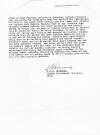
|
May 28, 1927.
Daily report of intelligence, Naval
Forces on shore in western Nicaragua (on
Cabulla's death), p. 2.
"[…] cided to take measures to avoid a
disgrace. Captain Richards went searching for
Cabulla to warn him against any happenings.
Arriving at the house where Cabulla and his
woman were staying the Captain told Cabulla that
in view of the instance that occurred between
Cabulla and other persons he saw himself forced
to disarm him. As soon as Cabulla understood he
replied that he would not submit to being
disarmed. In view of that reply and seeing that
Cabulla was drawing his pistol, Captain Richards
drew his pistol and shot Cabulla, while he was
yet in the act of drawing his pistol. Cabulla
fell dead without being able to do anything else
against the Marine Captain. Cabulla’s woman who
had witnesses [witnessed?] this short tragedy
saw her man fall mortally wounded, she threw
herself over the bleeding body and taking that
was still in the stiffened hand of Cabulla she
shot at Captain Richards. He seeing himself
threatened and noting the decidedly angry
attitude of the enraged woman defended himself
by shooting the woman at the very moment she was
making ready to fire a second shot at him. She
also fell mortally wounded. ¶ J.P.S. DEVEREUX, ¶
Second Lieutenant, U.S.M.C., ¶ Bn-2."
|
|
NEXT PAGE
|
|
|
|
|
|
|
